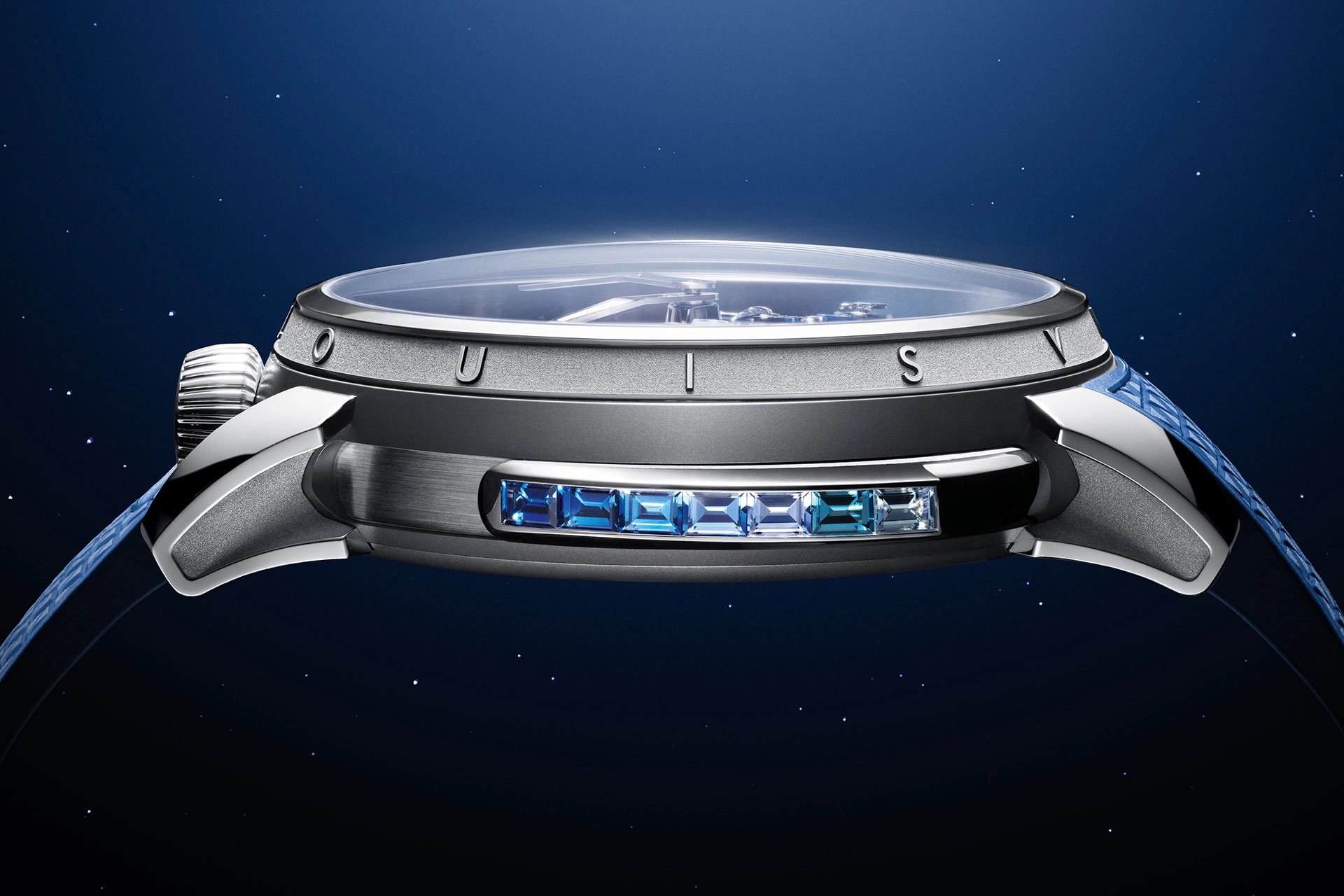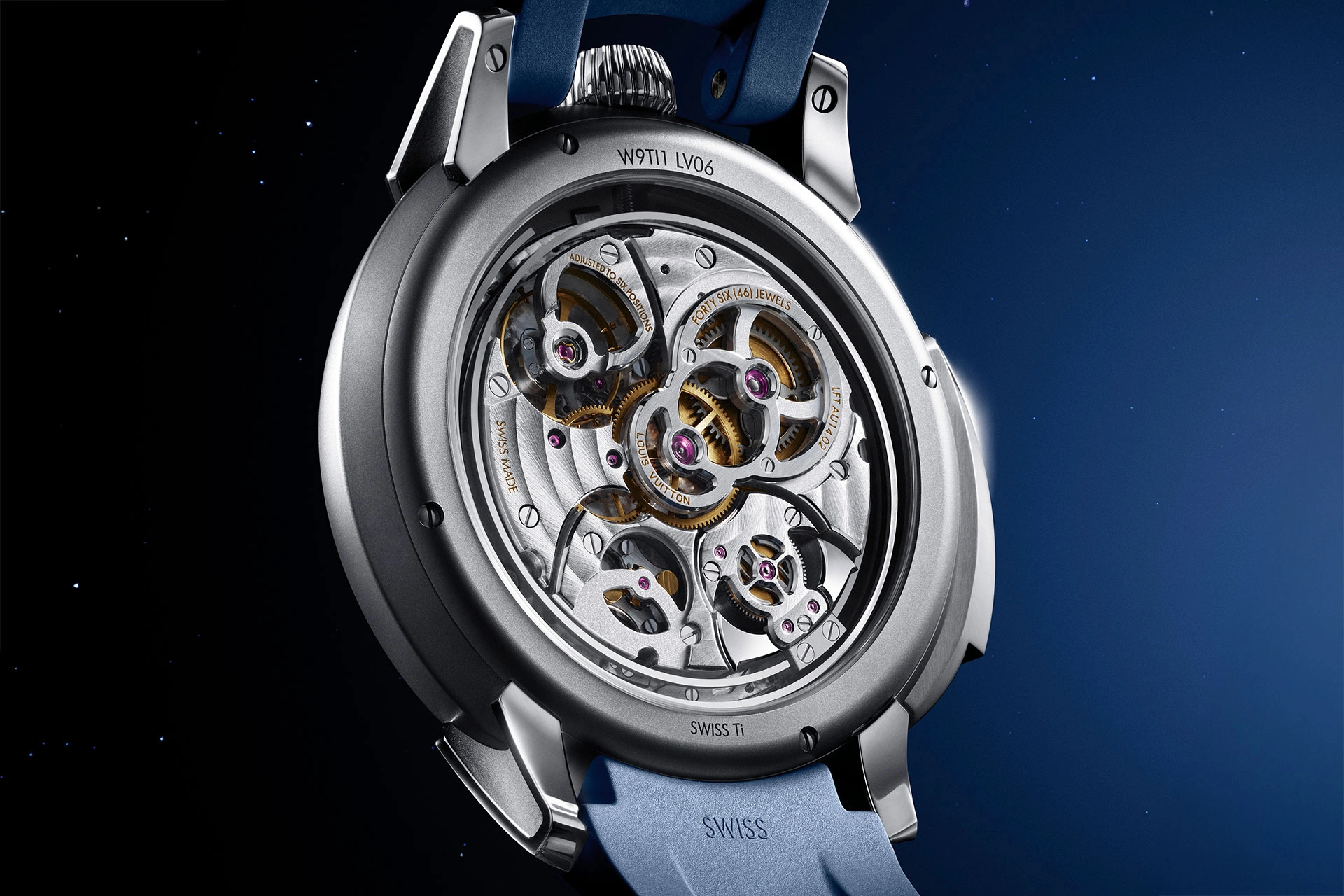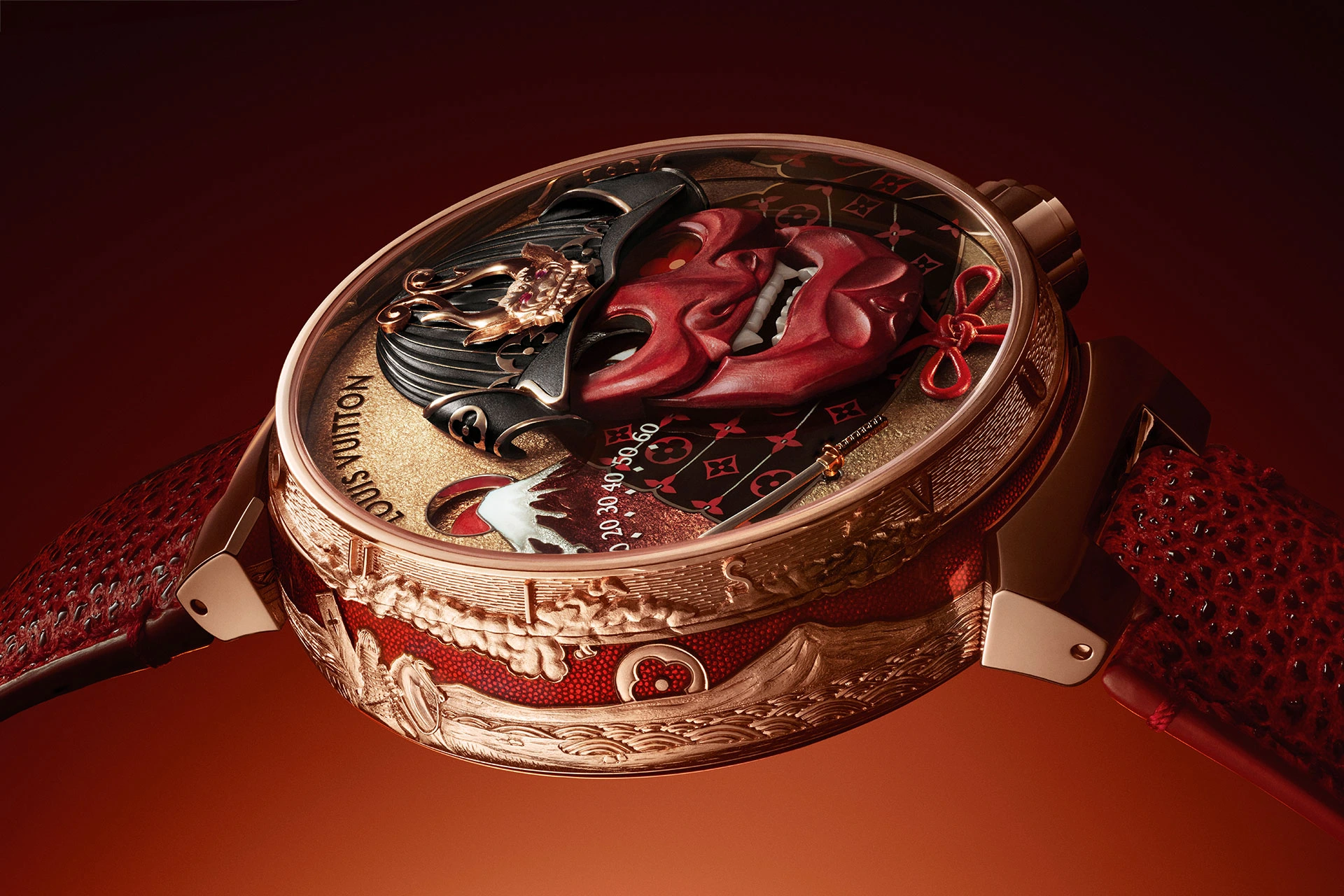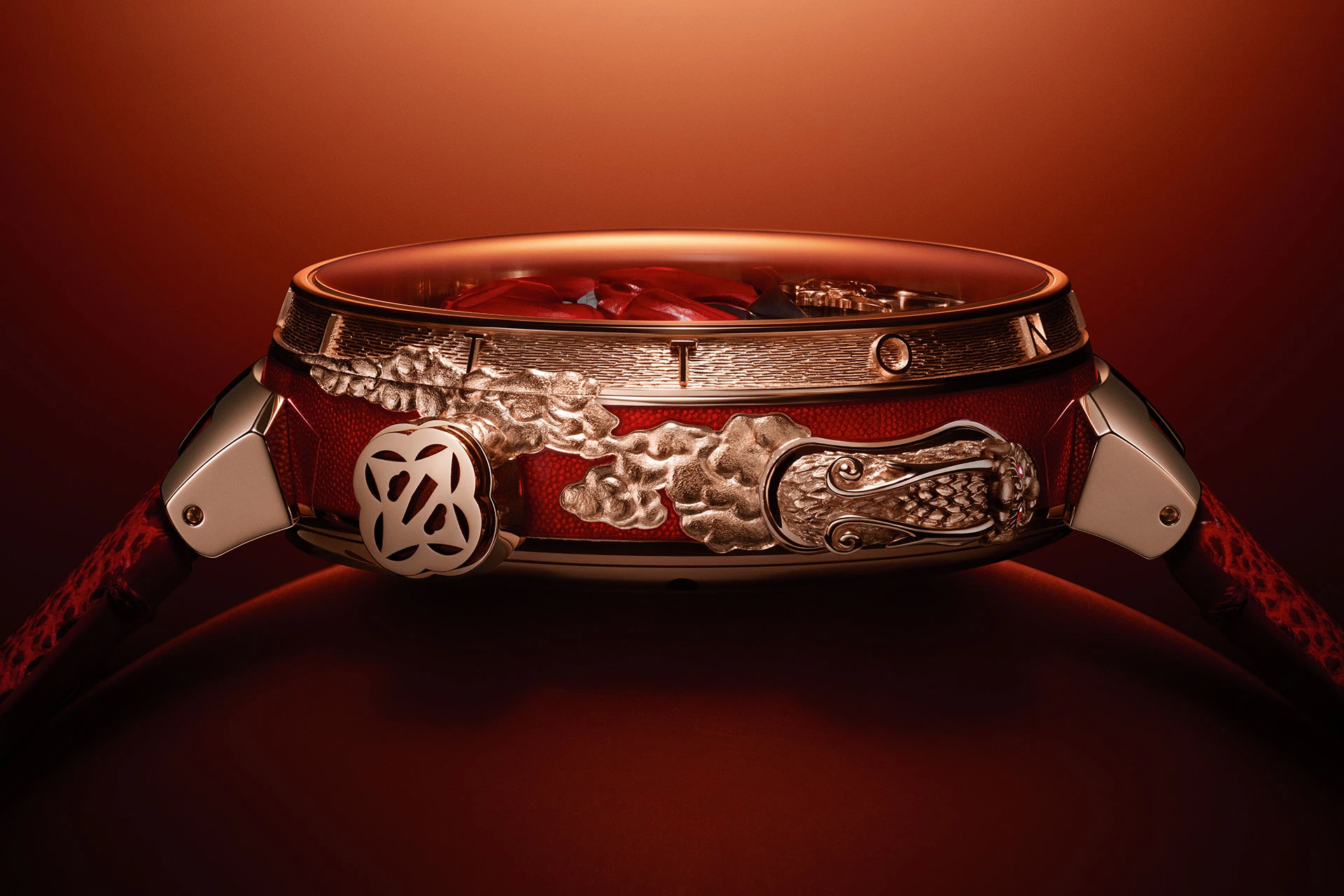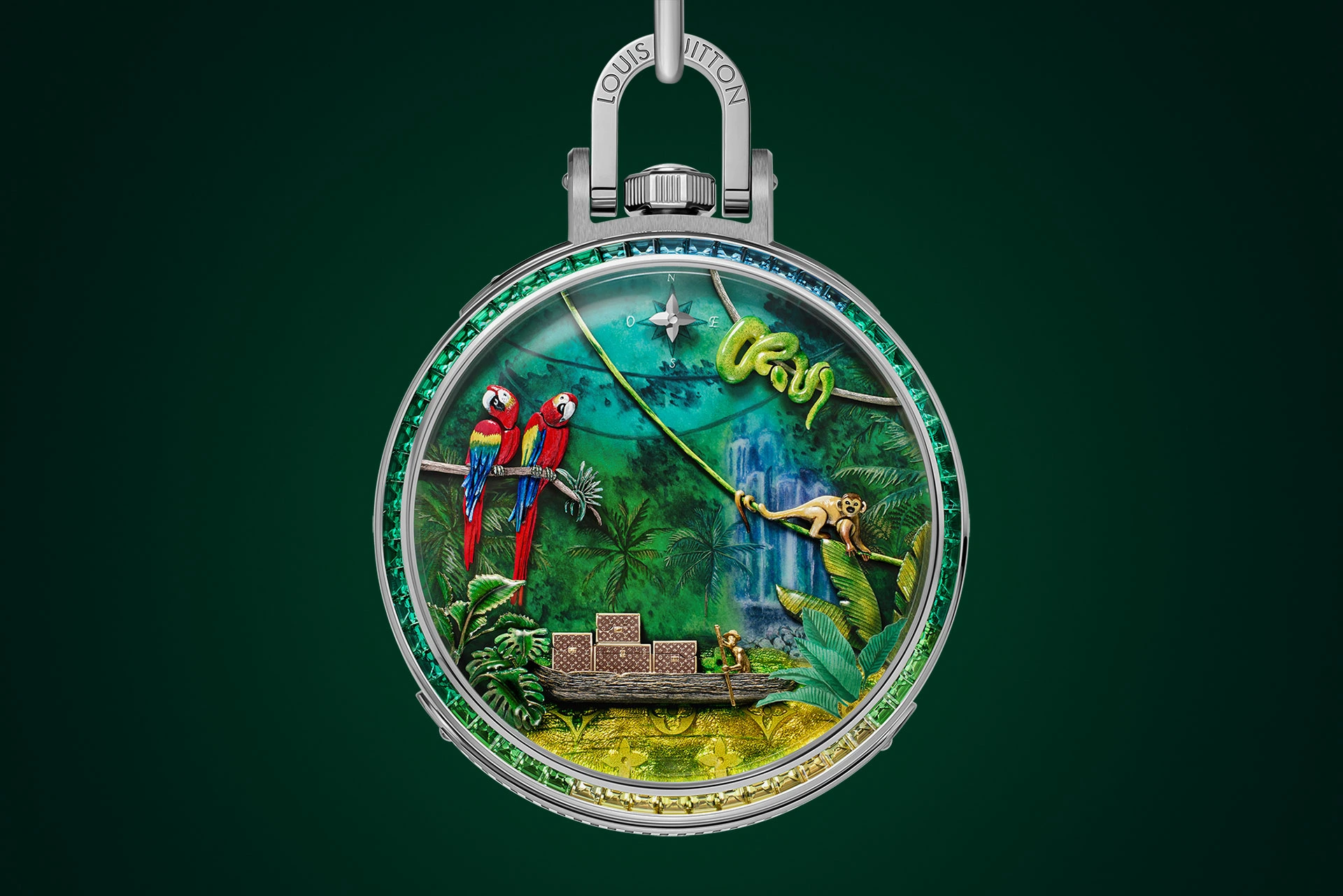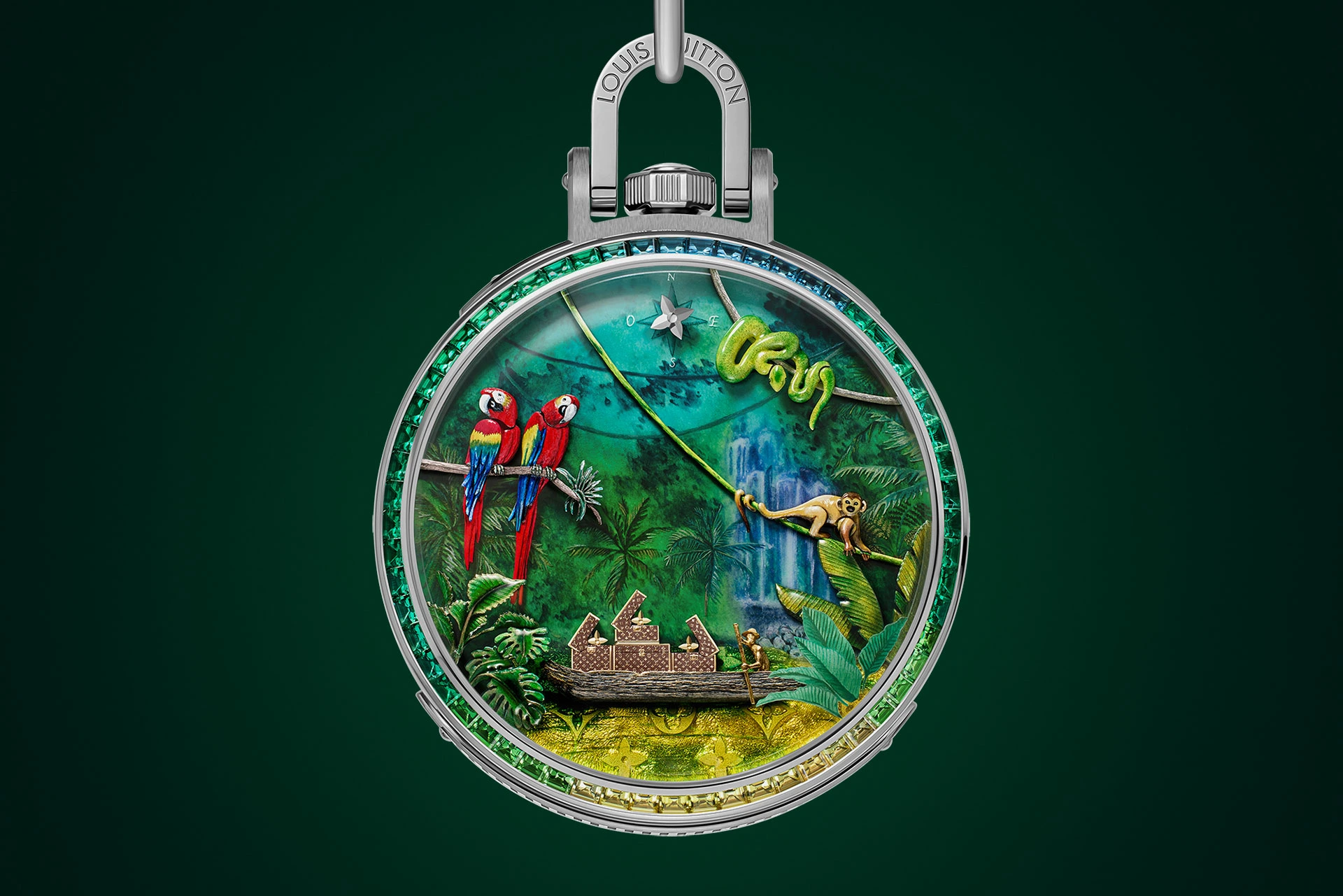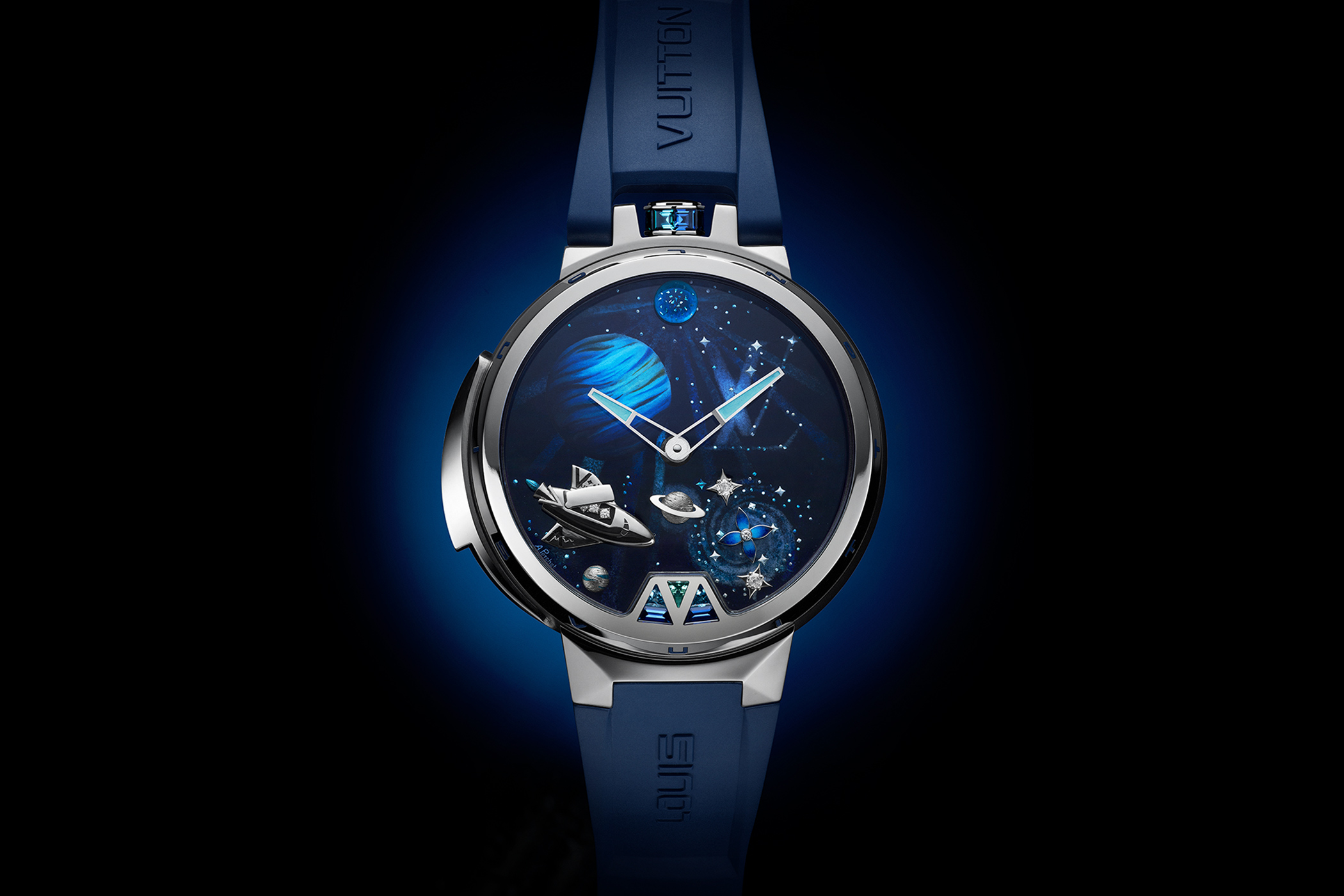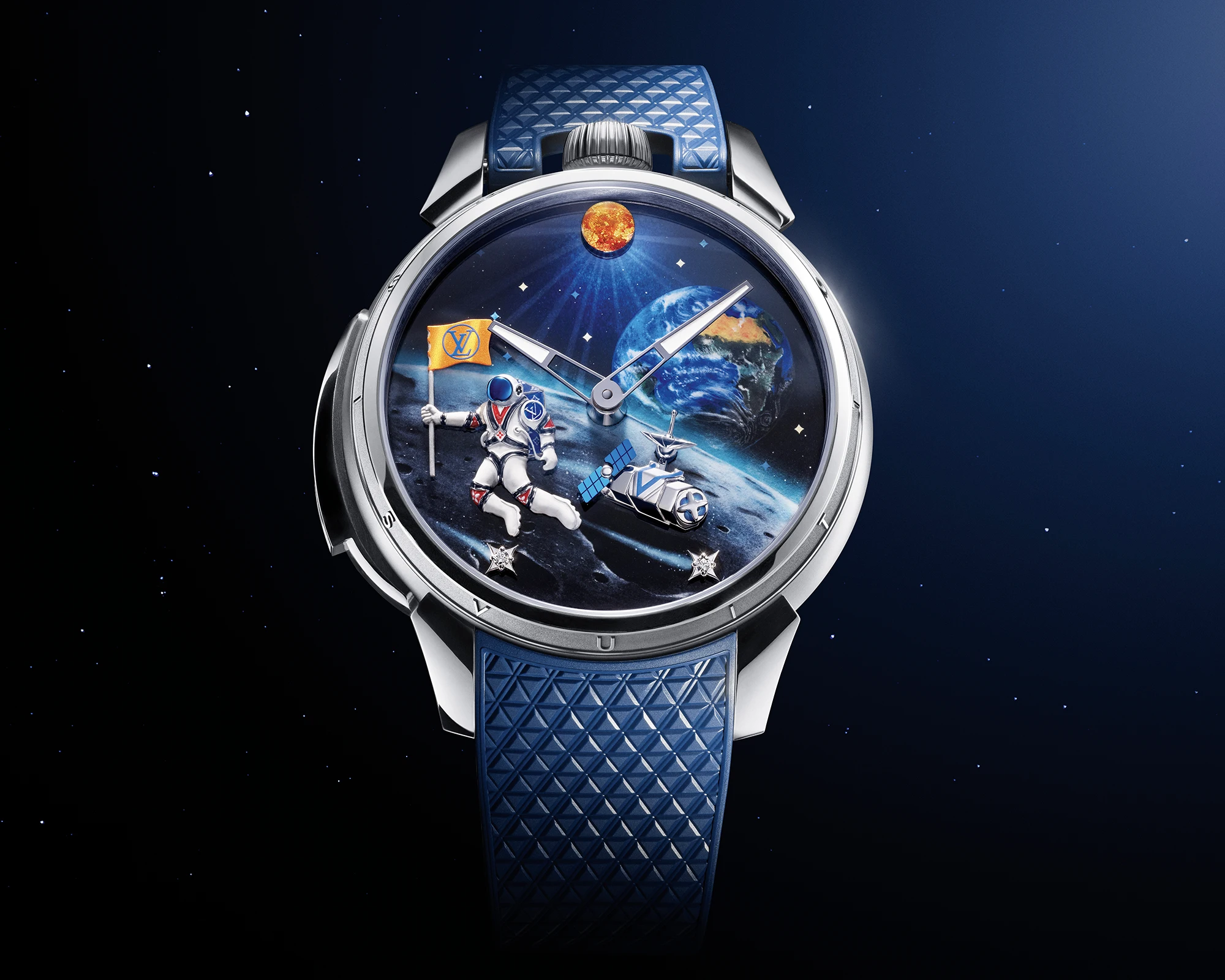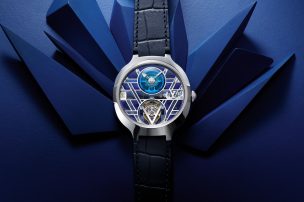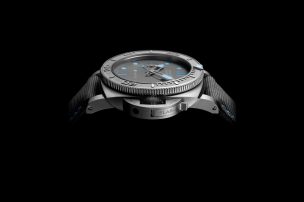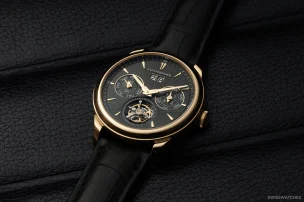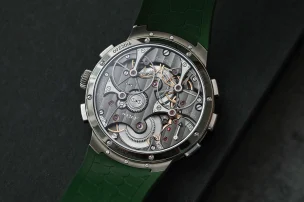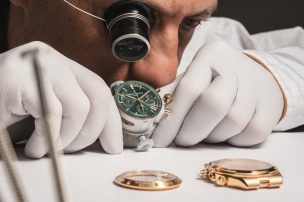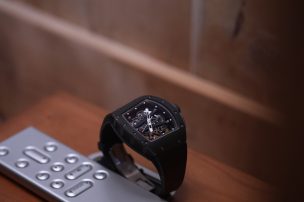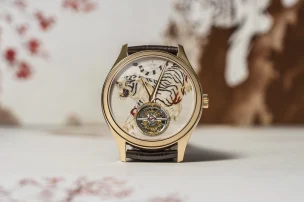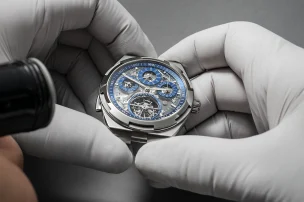
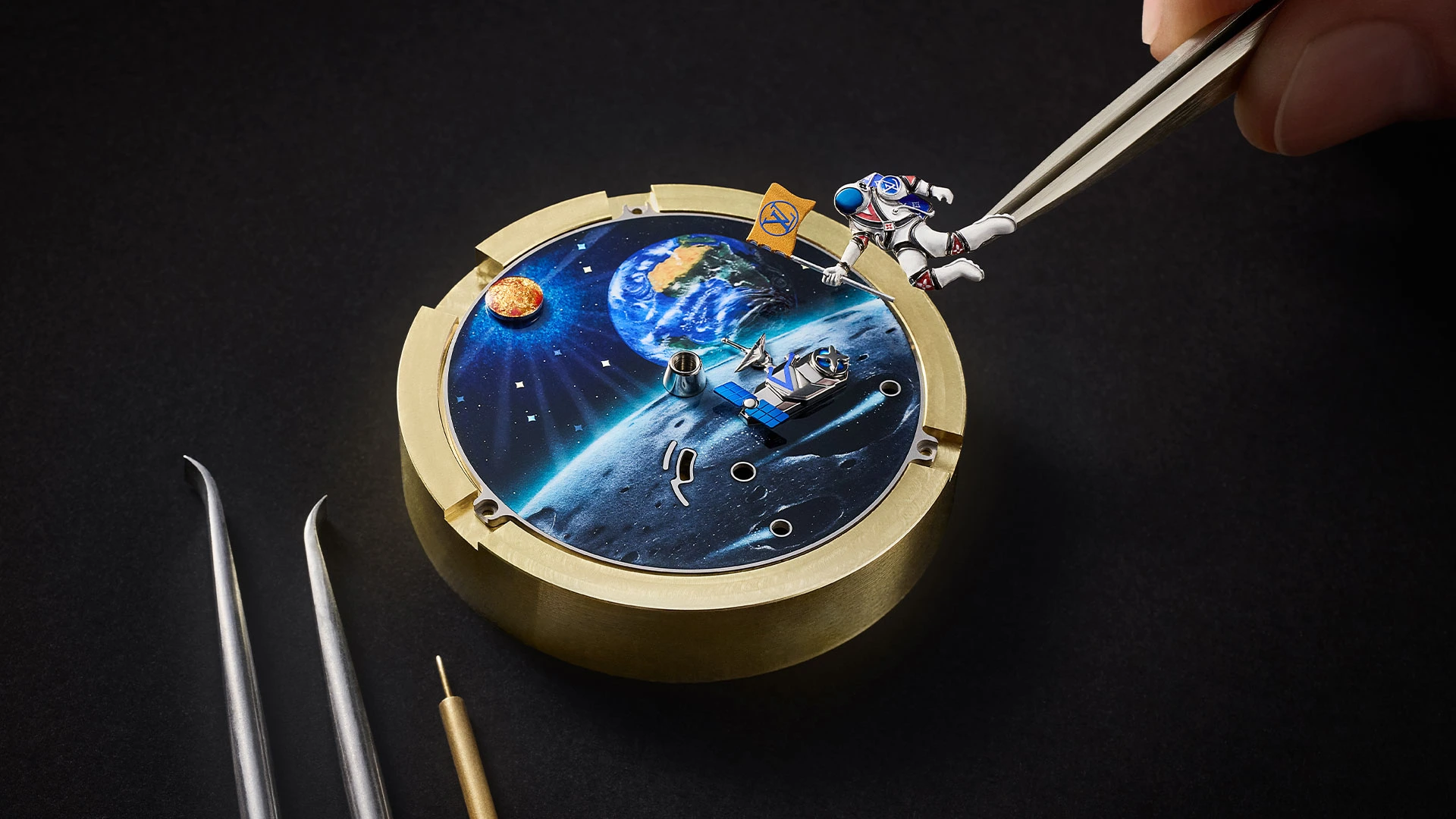
A Passion for Automatons – Louis Vuitton Sets New Standards with Three Exceptional Creations
Under the leadership of co-founders Michel Navas and Enrico Barbasini, Louis Vuitton’s La Fabrique du Temps is steadily establishing itself as a serious contender in the realm of haute horlogerie – despite being little more than a decade old. Today, the manufacture not only produces its own movements, but also undertakes intricate and rare decorative techniques, as well as crafting its own cases – creations that operate at the highest levels of mechanical watchmaking. With three new timepieces, Louis Vuitton once again demonstrates its watchmaking savoir-faire, reinterpreting the historical complication of the automaton in a thoroughly contemporary design language.
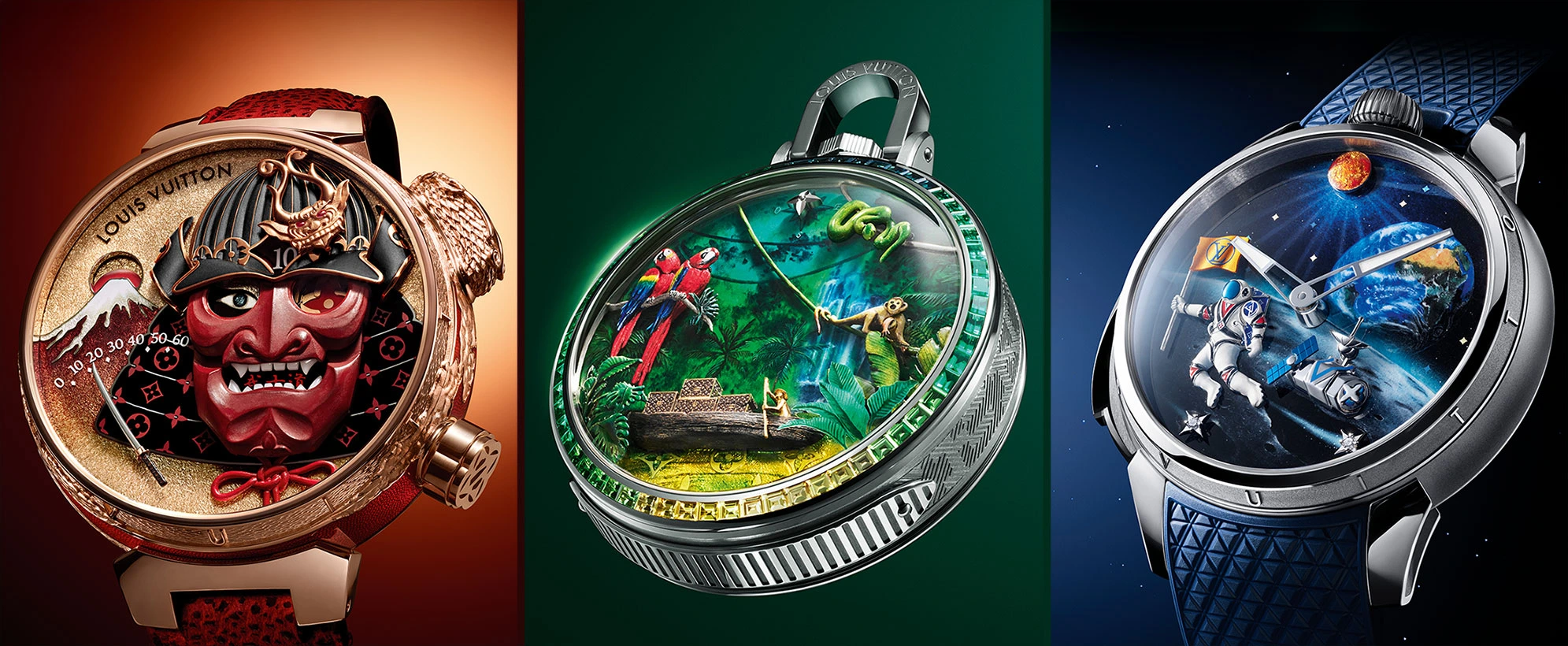
Tambour Bushido Automata, Escale en Amazonie and Tambour Taiko Galactique
The Tambour Bushido Automata, Escale en Amazonie, and Tambour Taiko Galactique combine mechanical dial animation with fine engraving and elaborate enamelling to create vivid, kinetic scenes. Of particular note is the Escale en Amazonie pocket watch – equipped with a minute repeater, tourbillon, and 15 moving elements, it features the most complex movement La Fabrique du Temps has produced to date. Here is a closer look at the three automaton watches.

The co-founders of Louis Vuitton’s La Fabrique du Temps: Michel Navas and Enrico Barbasini
Three Watches, Three Concepts
The story of Louis Vuitton’s automaton watches began in 2021 with the launch of the Tambour Carpe Diem – a timepiece whose dial features a serpent slithering through a skull. Two years later, inspired by Chinese culture and the art of mask changing in Sichuan opera, the Maison introduced the Tambour Opera Automata.
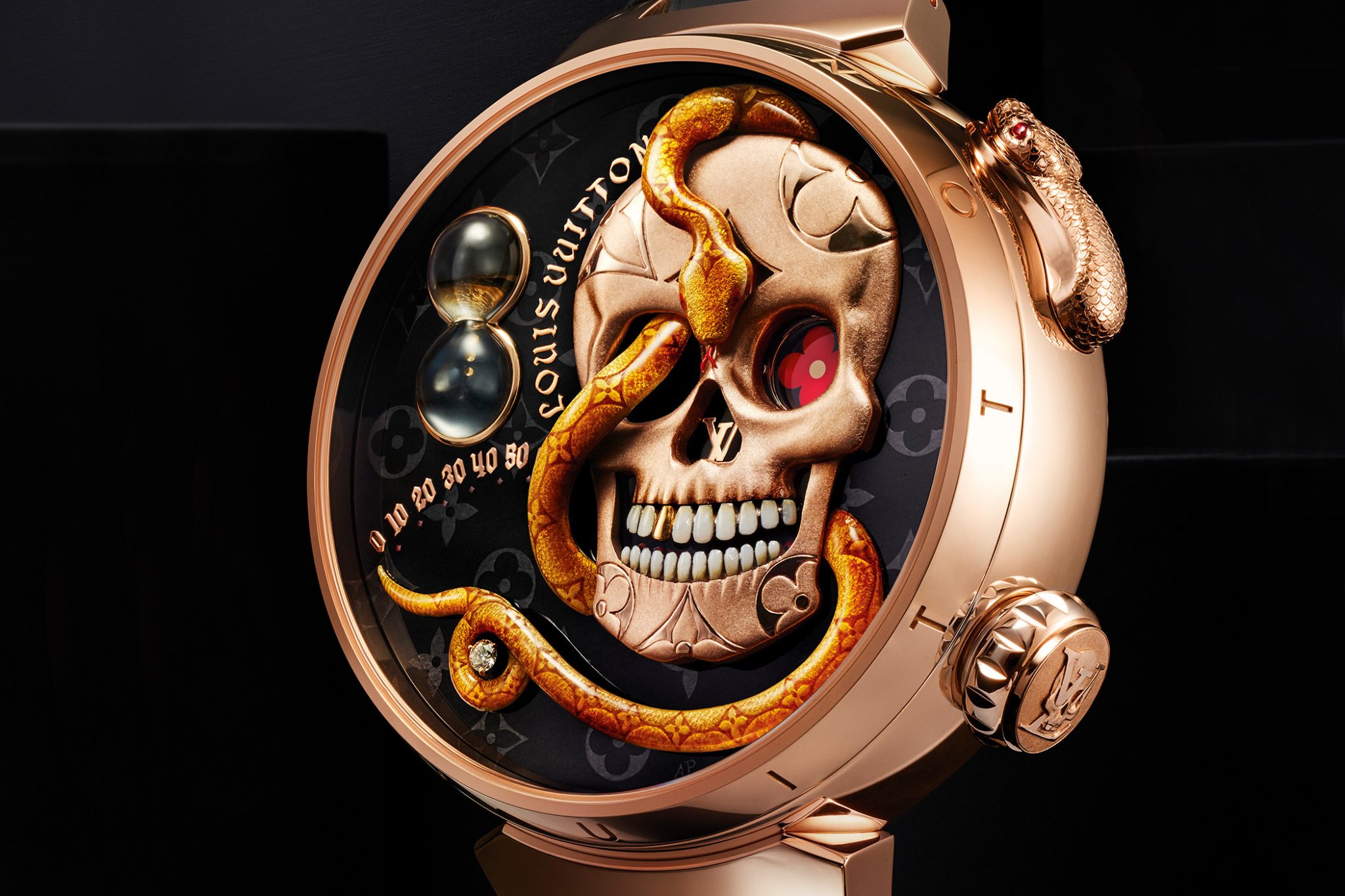
Now, La Fabrique du Temps Louis Vuitton unveils three further automaton timepieces, each offering a distinct interpretation of the concept: The Tambour Bushido Automata explores the legendary figure of the Japanese samurai; the Escale en Amazonie animates a vibrant Amazonian tableau rich in biodiversity; and the Tambour Taiko Galactique depicts the moon landing of a dancing astronaut on its dial.
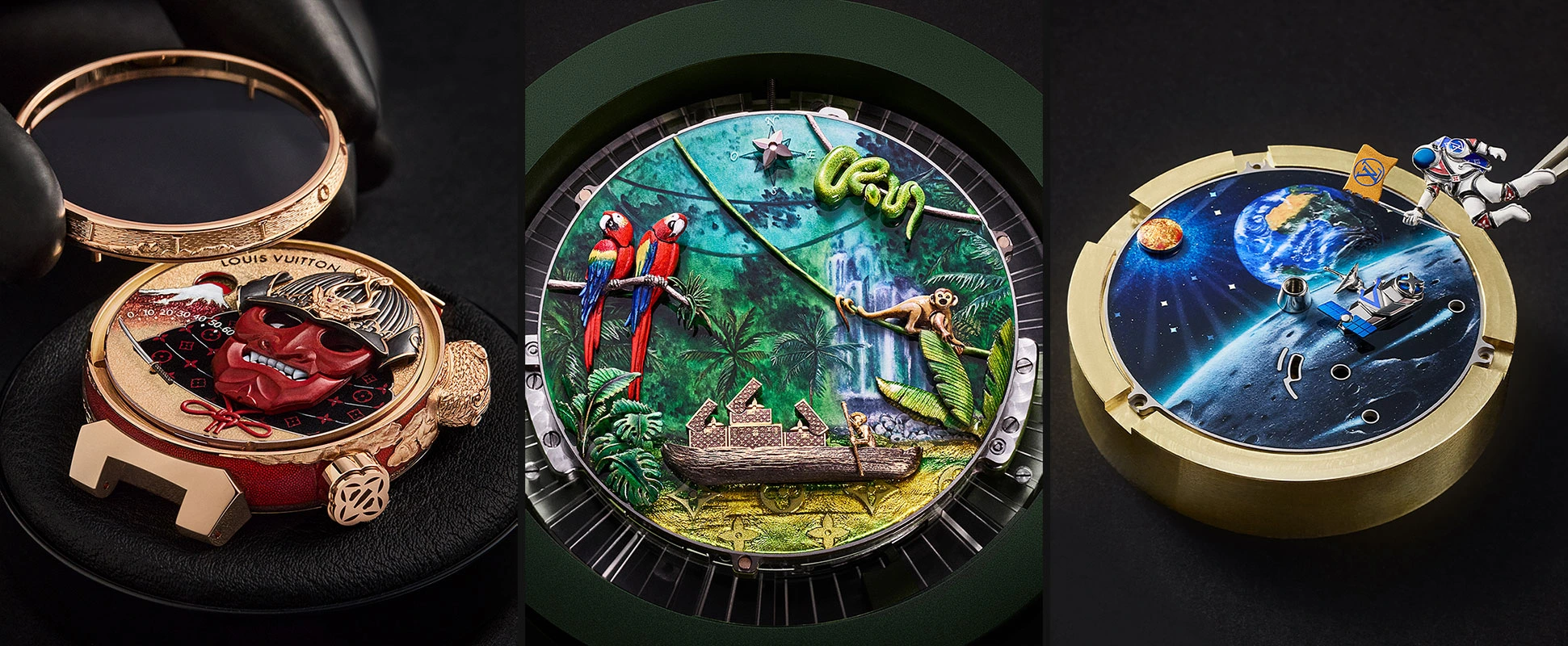
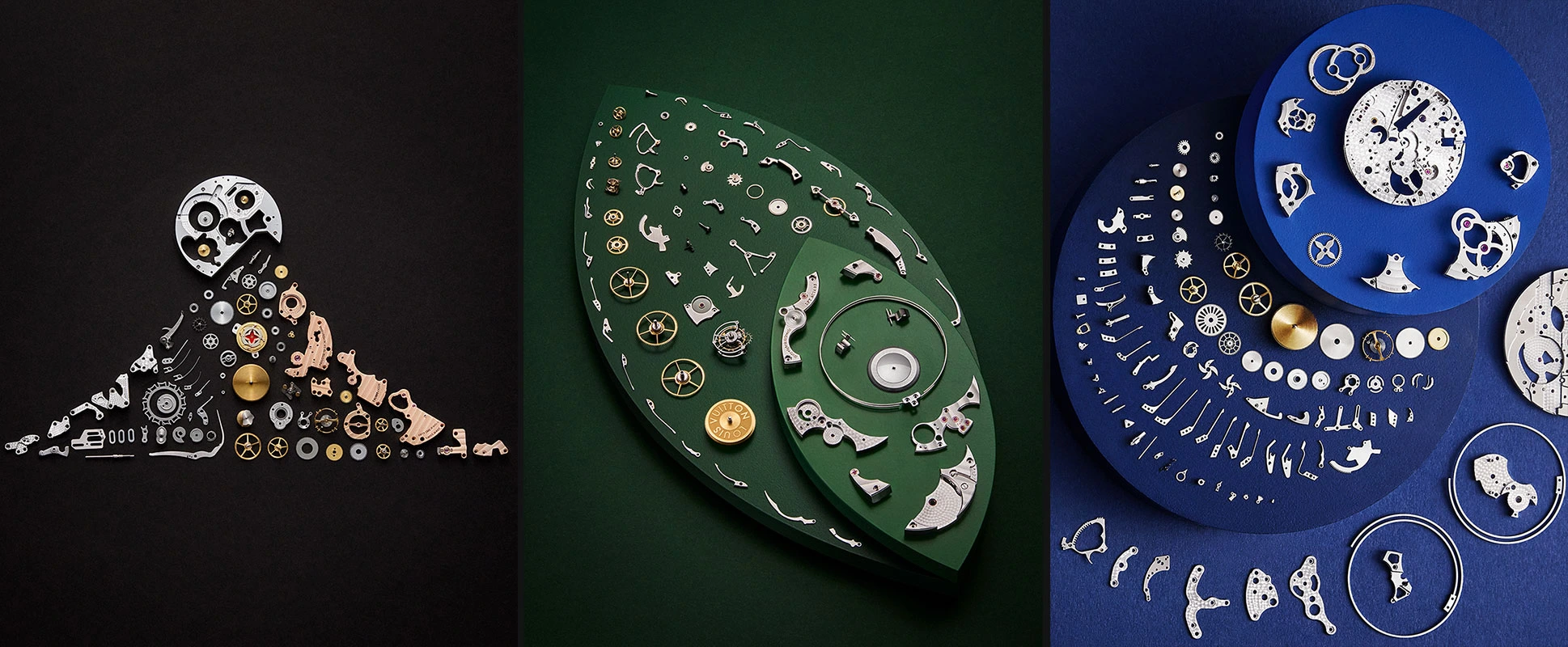
What is especially remarkable is the level of detail achieved not only on the dials but also within the movements themselves. Responsible for imbuing each timepiece with its unique character is La Fabrique du Temps Louis Vuitton, based in Geneva – home to every essential aspect of production, from the Fabrique des Mouvements (movement manufacture) to the Fabrique des Arts (dials and métiers d’art).
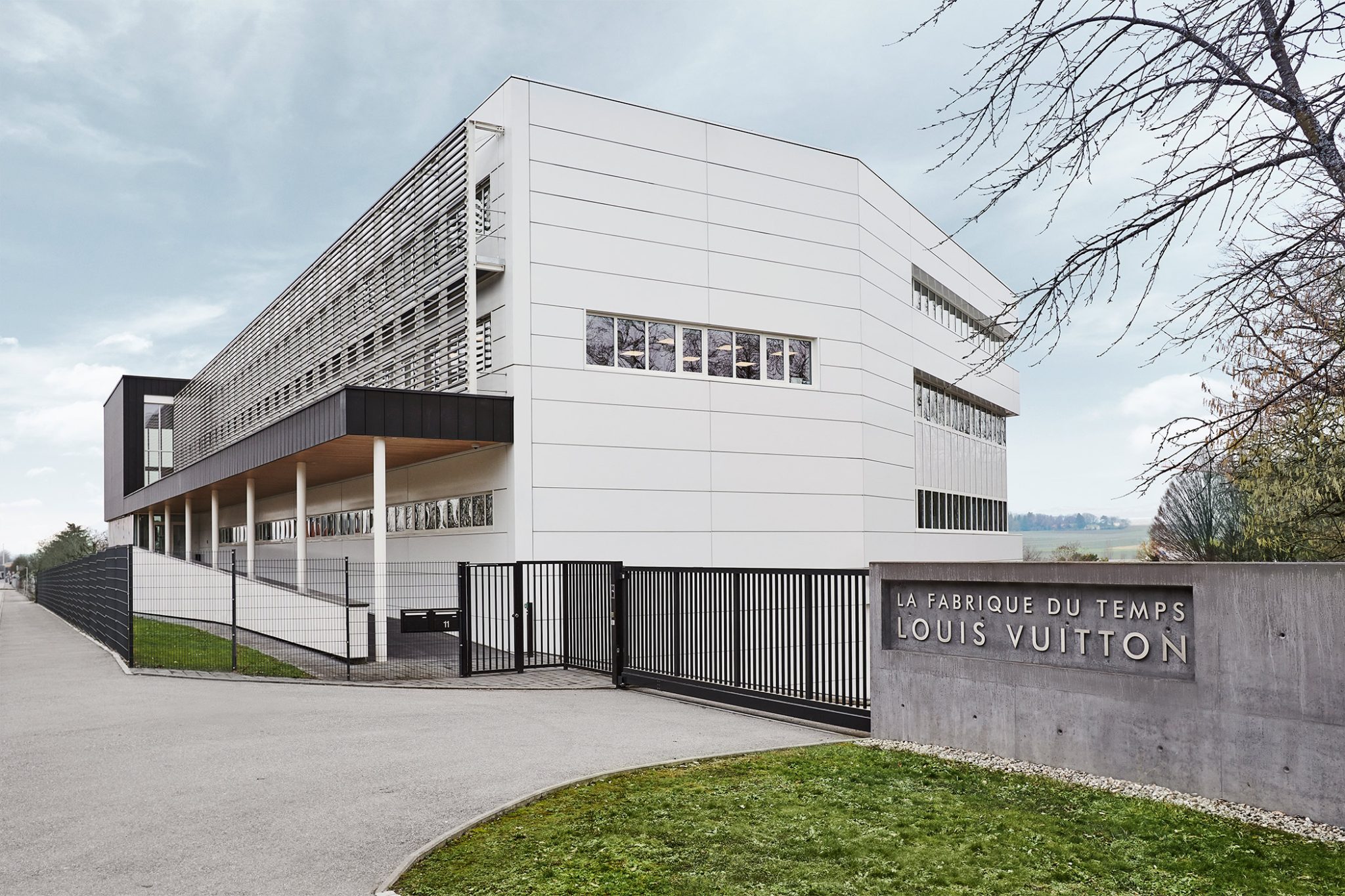
Case production is handled by the Fabrique des Boîtiers, a separate facility acquired by Louis Vuitton in 2024 to further enhance the manufacture’s expertise. Although La Fabrique du Temps and the Fabrique des Mouvements are housed in separate buildings, both are located in the Swiss town of Meyrin.
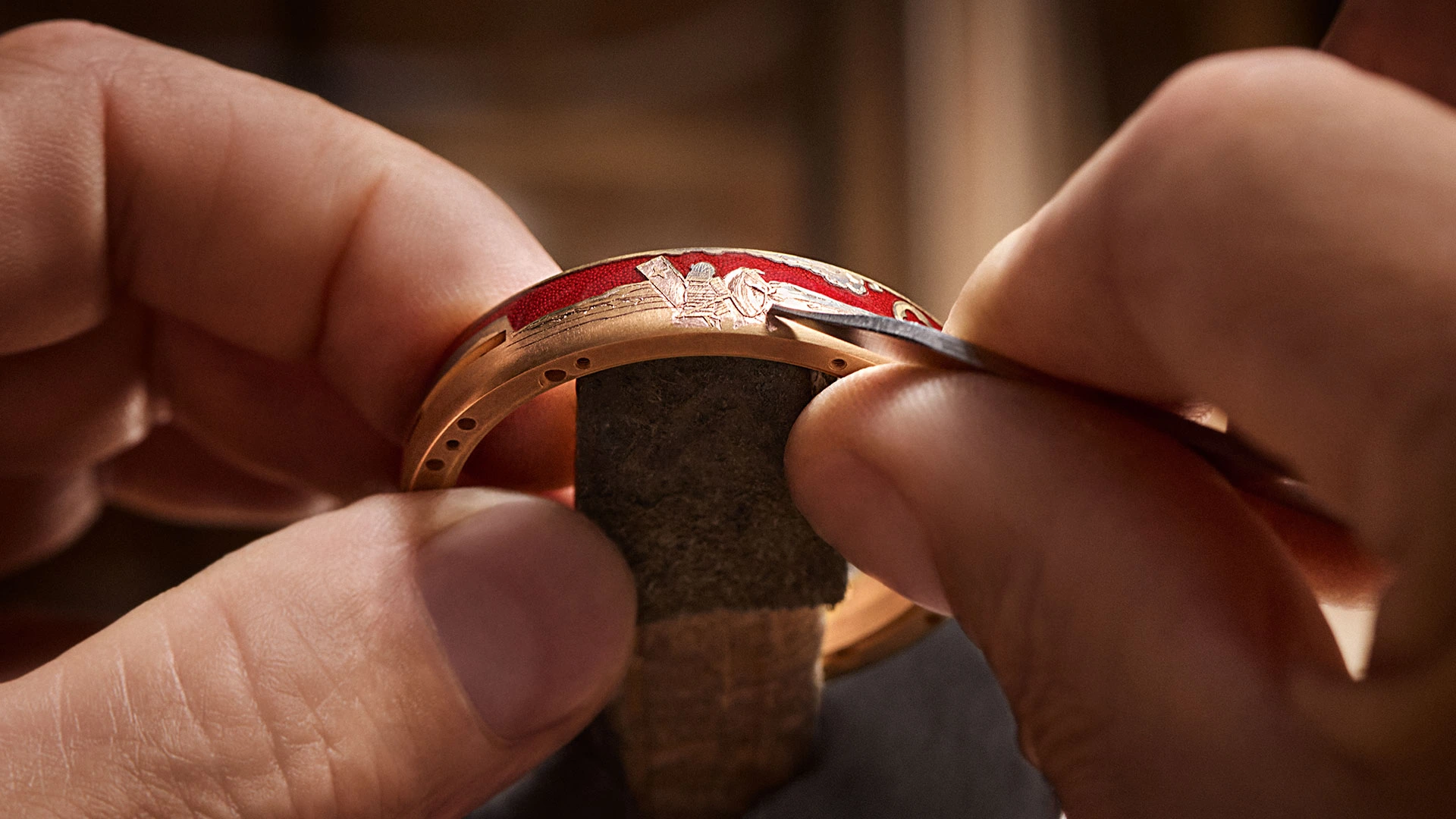
Tambour Bushido Automata
From manga and anime to sushi and sashimi, bustling metropolises to serene Zen gardens – Japan’s cultural landscape evokes a wealth of associations, often oscillating between vibrant pop culture and a centuries-old society shaped by honour and discipline. One of the most iconic figures within this duality is the Samurai. Long before they became symbols of Japanese cultural identity, the Samurai served as elite warriors to the aristocracy during the Heian period, beginning in 794 AD. Renowned not only for their combat skills but also for their strict moral code, they lived by Bushidō – the “way of the warrior” – which demanded loyalty and honour, even unto death.
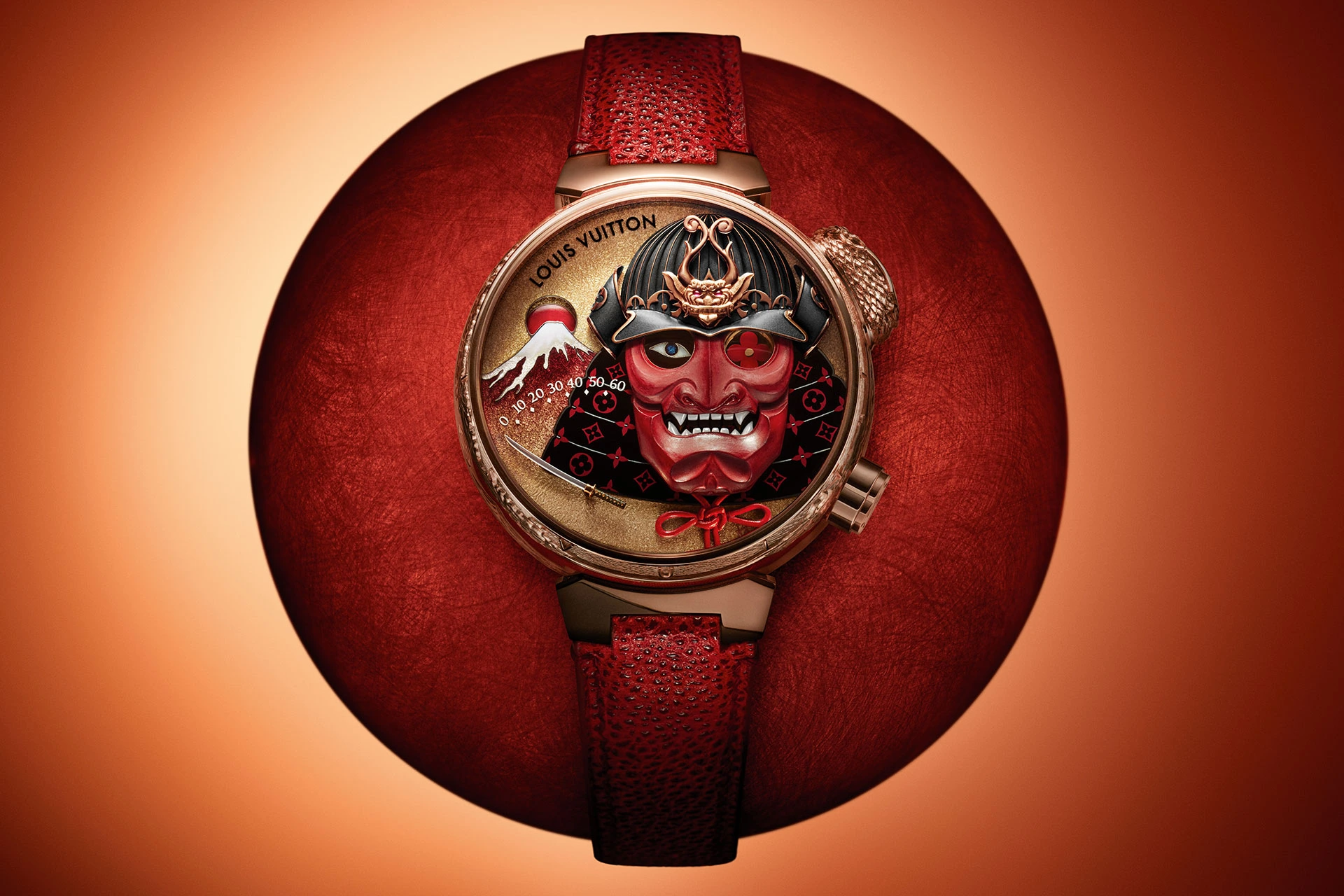
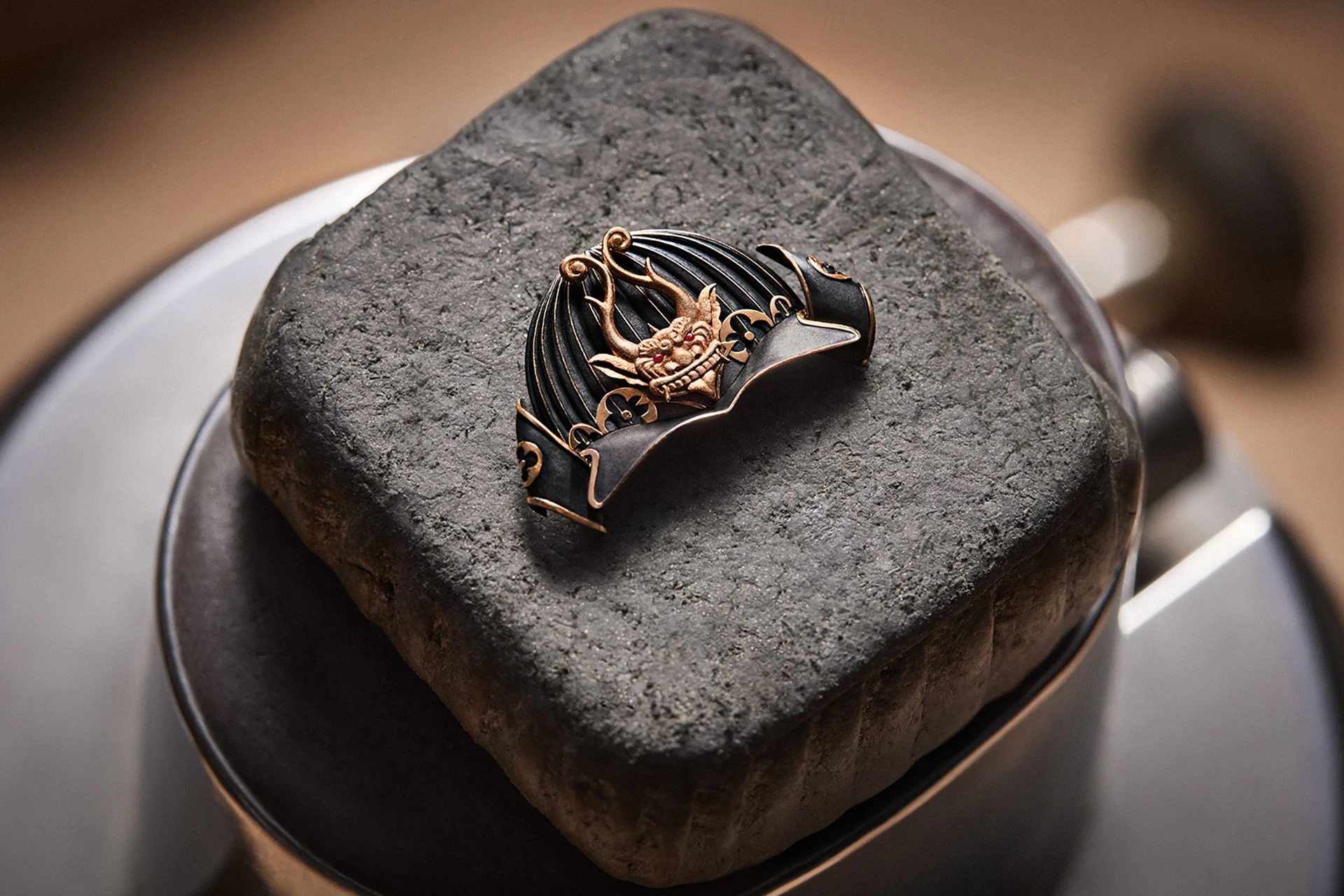
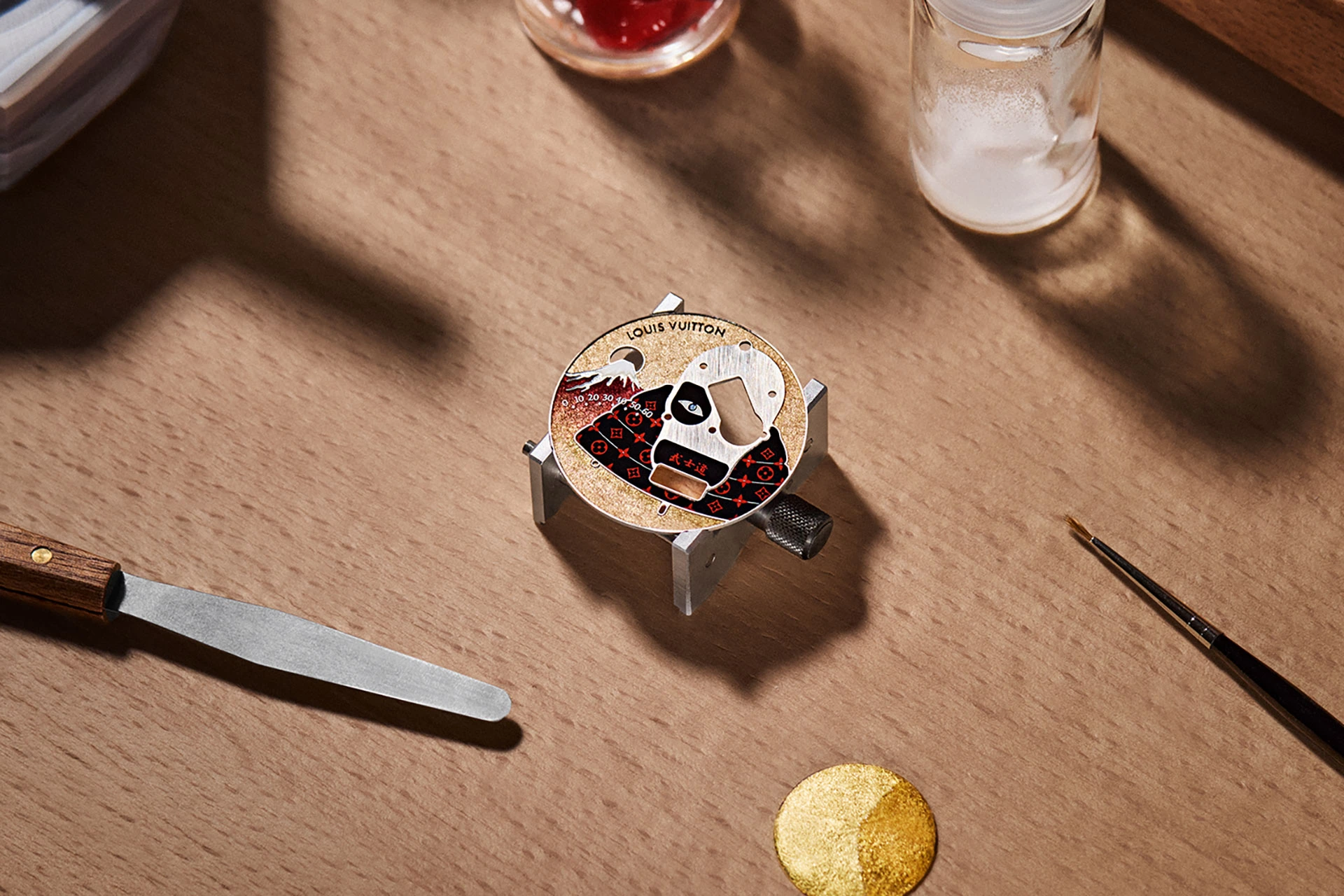
Louis Vuitton draws upon this figure with the Tambour Bushido Automata – the first Tambour model to feature a fully engraved and enamelled case. A glance at the dial reveals the head of a Samurai, journeying through the landscape beneath the silhouette of Mount Fuji.
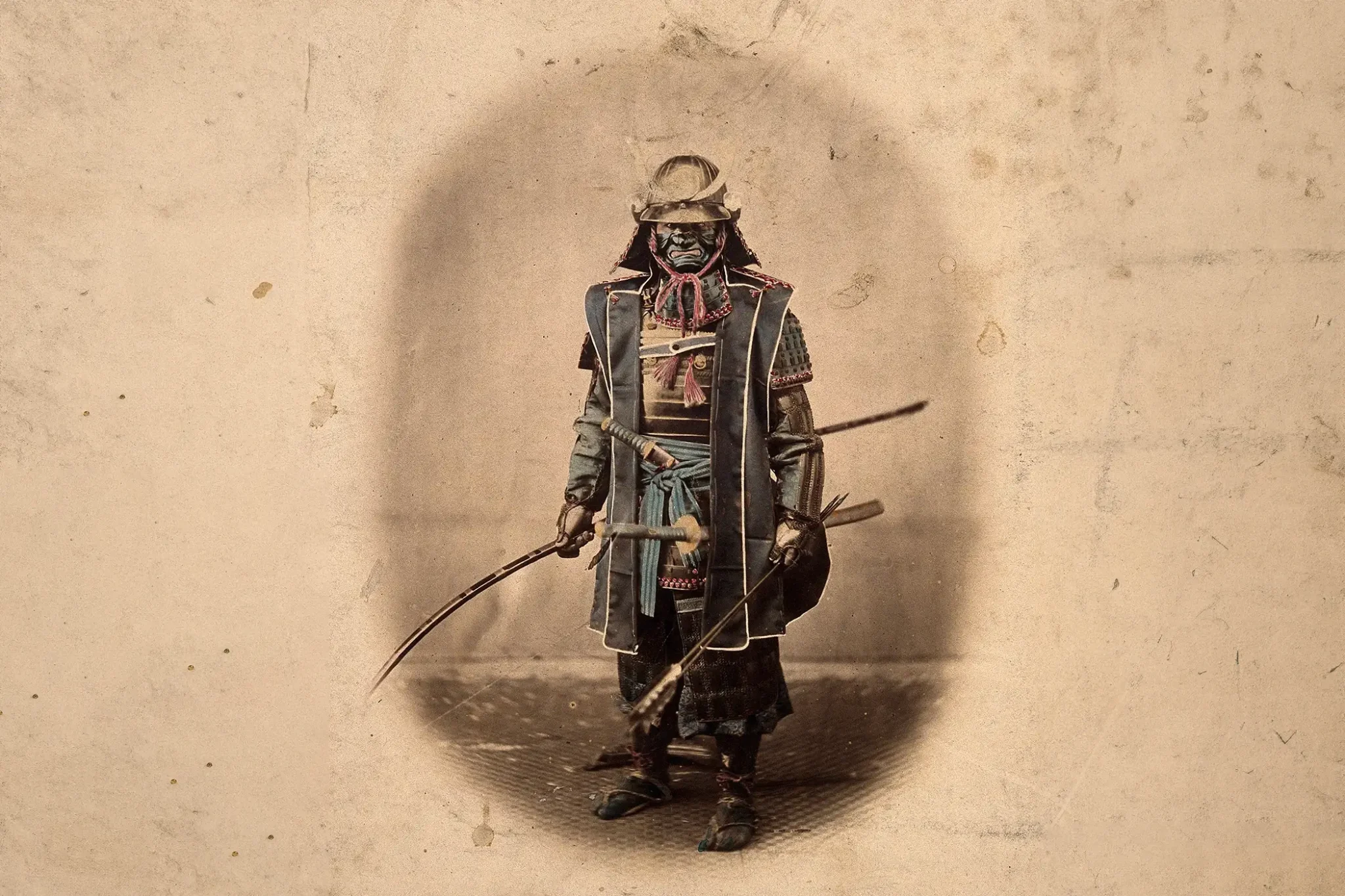
Portrait of a samurai in full armour, circa 1860
Credit © Felice Beato / Wellcomeimages / CC-BY-4.0
The Dial of the Tambour Bushido Automata
Central to the composition is the Kabuto, the Samurai’s helmet, complete with an expressive facial mask. This mask – known as a Mempō – originally served both as physical protection and psychological warfare. With its fierce grimace and bared teeth, it embodied a metaphor of death intended to instil fear in enemies. Louis Vuitton’s rendition captures this exact energy. The demonic impression is further enhanced by the use of red enamel – a colour traditionally symbolising blood and fire – applied in two vibrant layers and completed with a subdued matte coat. The Kabuto is complemented by the Shikoro, the helmet’s neck guard, decorated with Louis Vuitton’s Monogram flowers in red and black – a motif echoed in the Samurai’s open mouth.
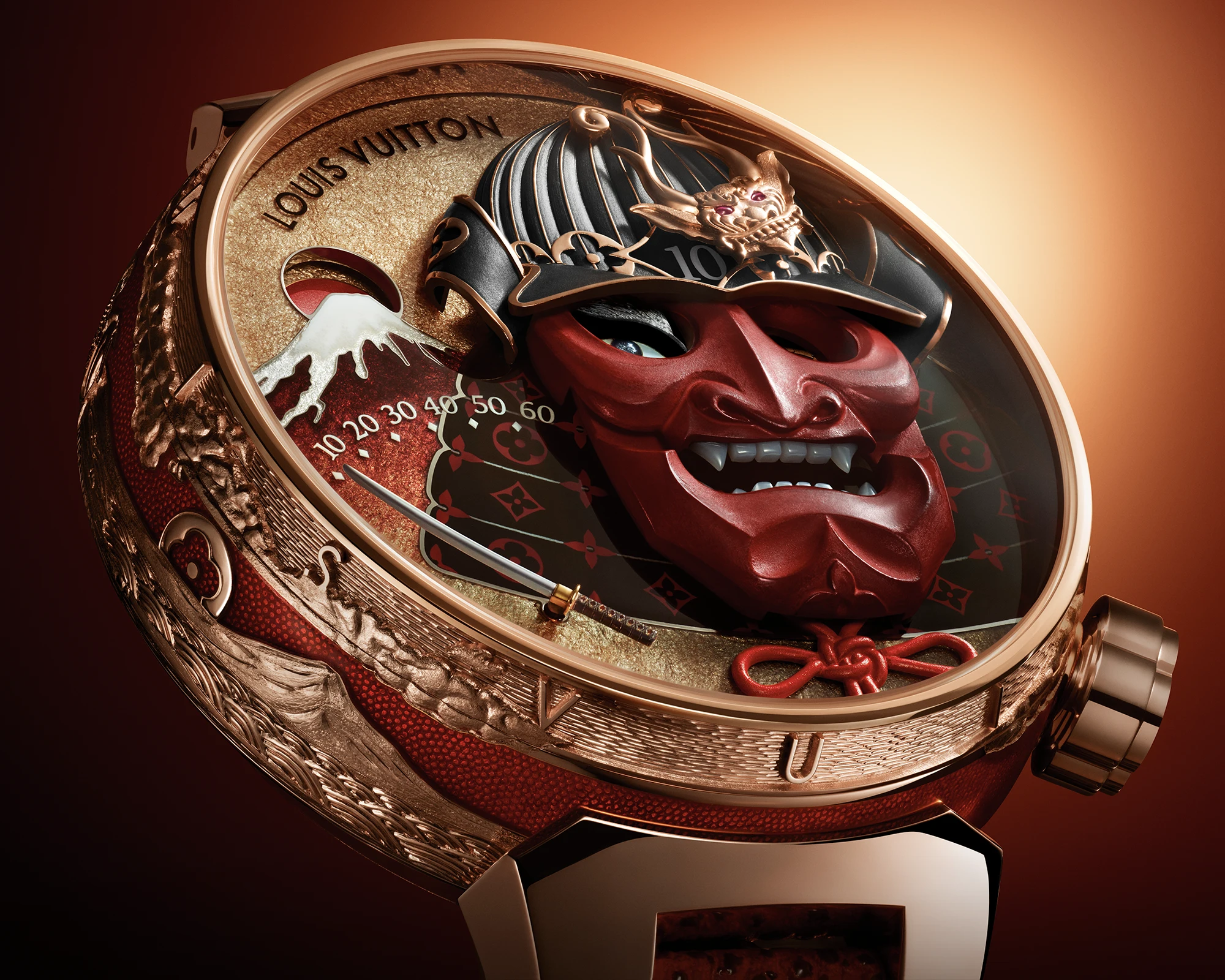
To the left of the mask lies a miniature depiction of Mount Fuji, crafted using the Cloisonné enamel technique. Here, delicate gold wires outline the mountain’s contours, which are then filled with white enamel to evoke snow, before being fired. Above the peak, a deep red sun symbolises dusk –functioning as the power reserve indicator for the watch’s 100-hour automatic movement.
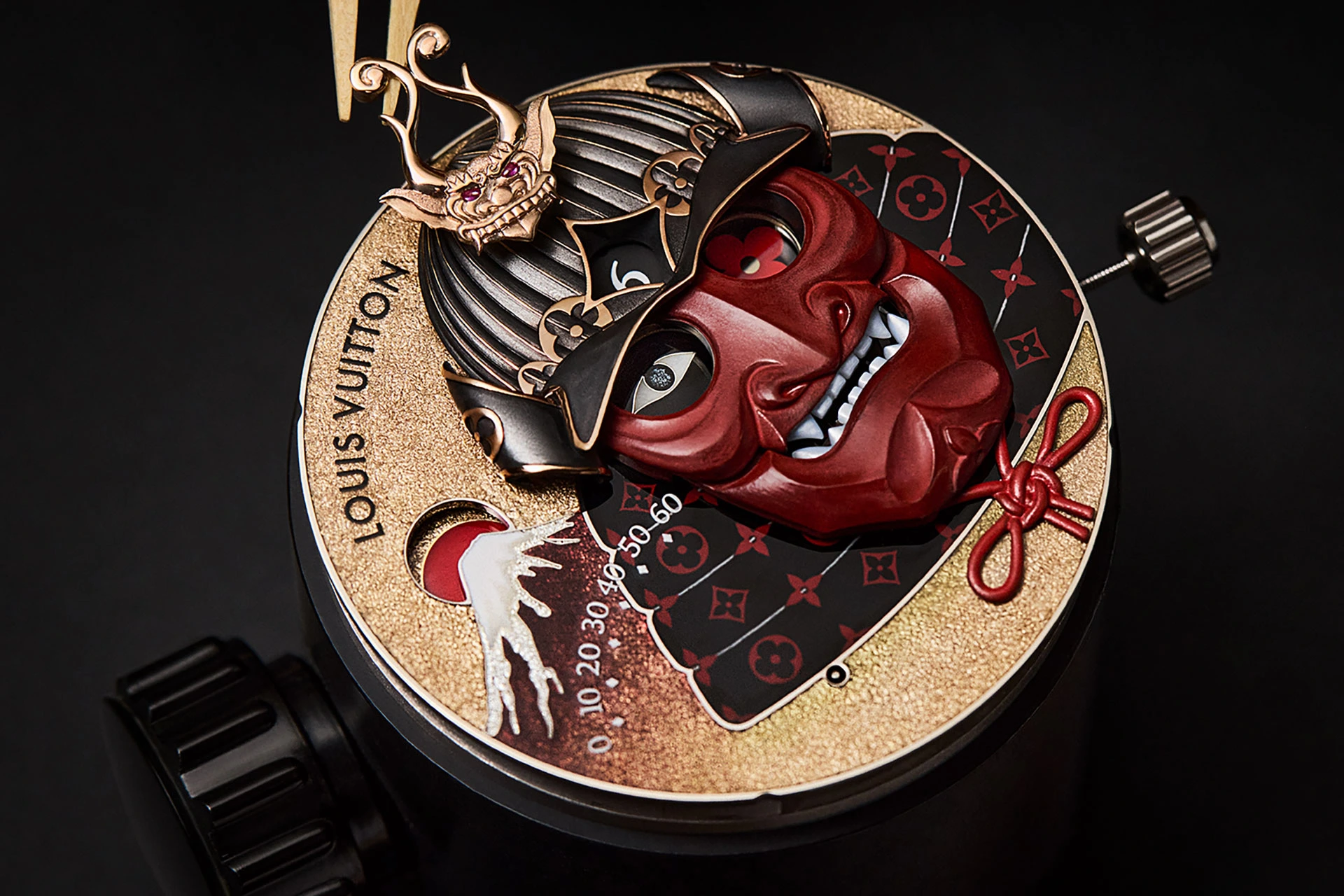
A samurai’s sword was an essential part of his battle gear, and he traditionally carried two: the shorter Wakizashi, around 30 cm in length, and the longer Katana, a curved blade of about 70 cm. Famed for its craftsmanship using folded, multi-layered steel, the Katana has become emblematic of the Samurai. On this timepiece, it assumes a horological function – serving as the retrograde minute hand.
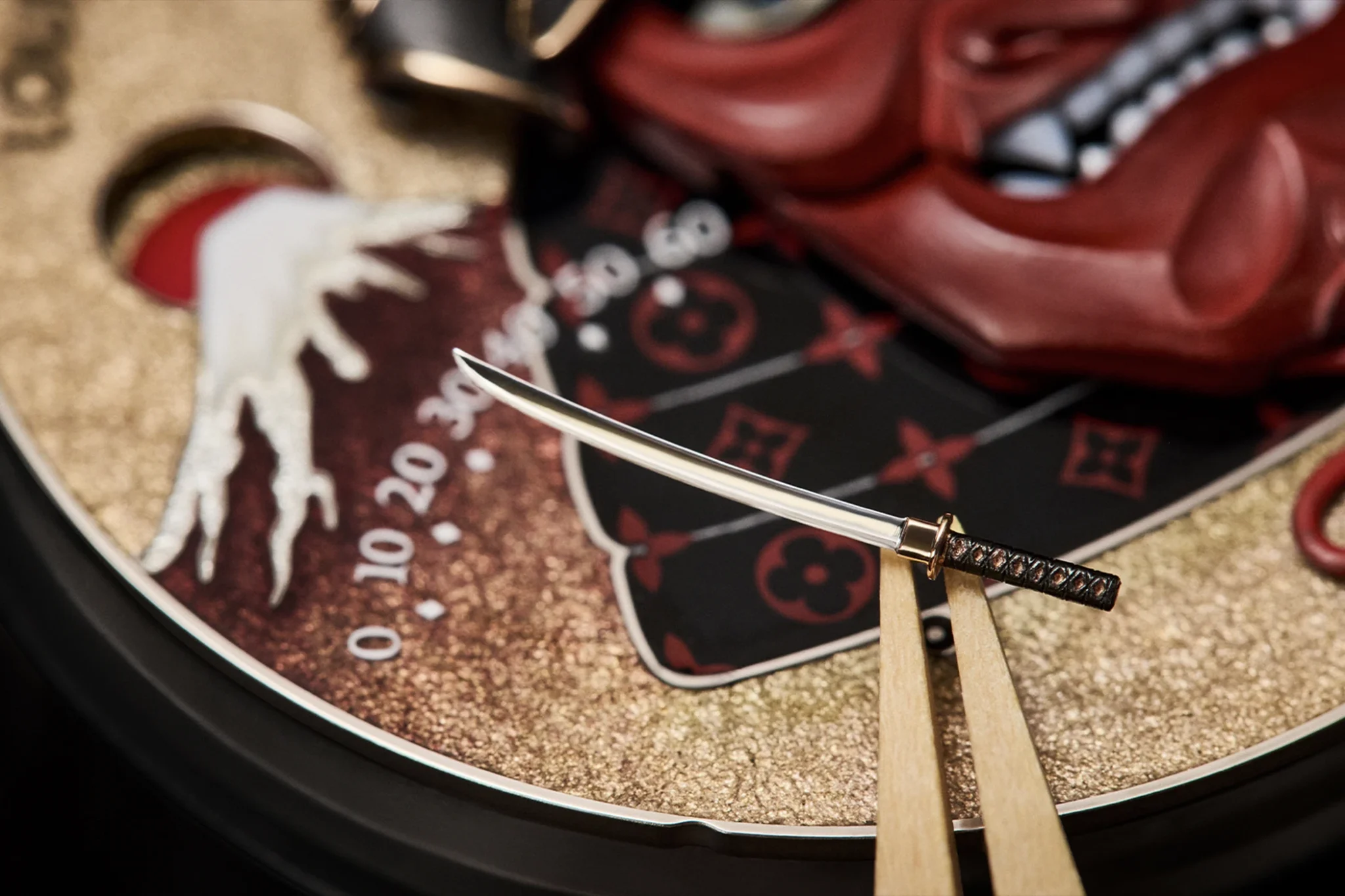
To achieve the dial’s luminous golden appearance, Louis Vuitton employed the Paillonné technique: a base layer of pink enamel is overlaid with silver foil, followed by two coats of translucent enamel, creating a shimmering, glass-like finish. According to the Maison, over 120 hours were dedicated solely to the enamelling process.
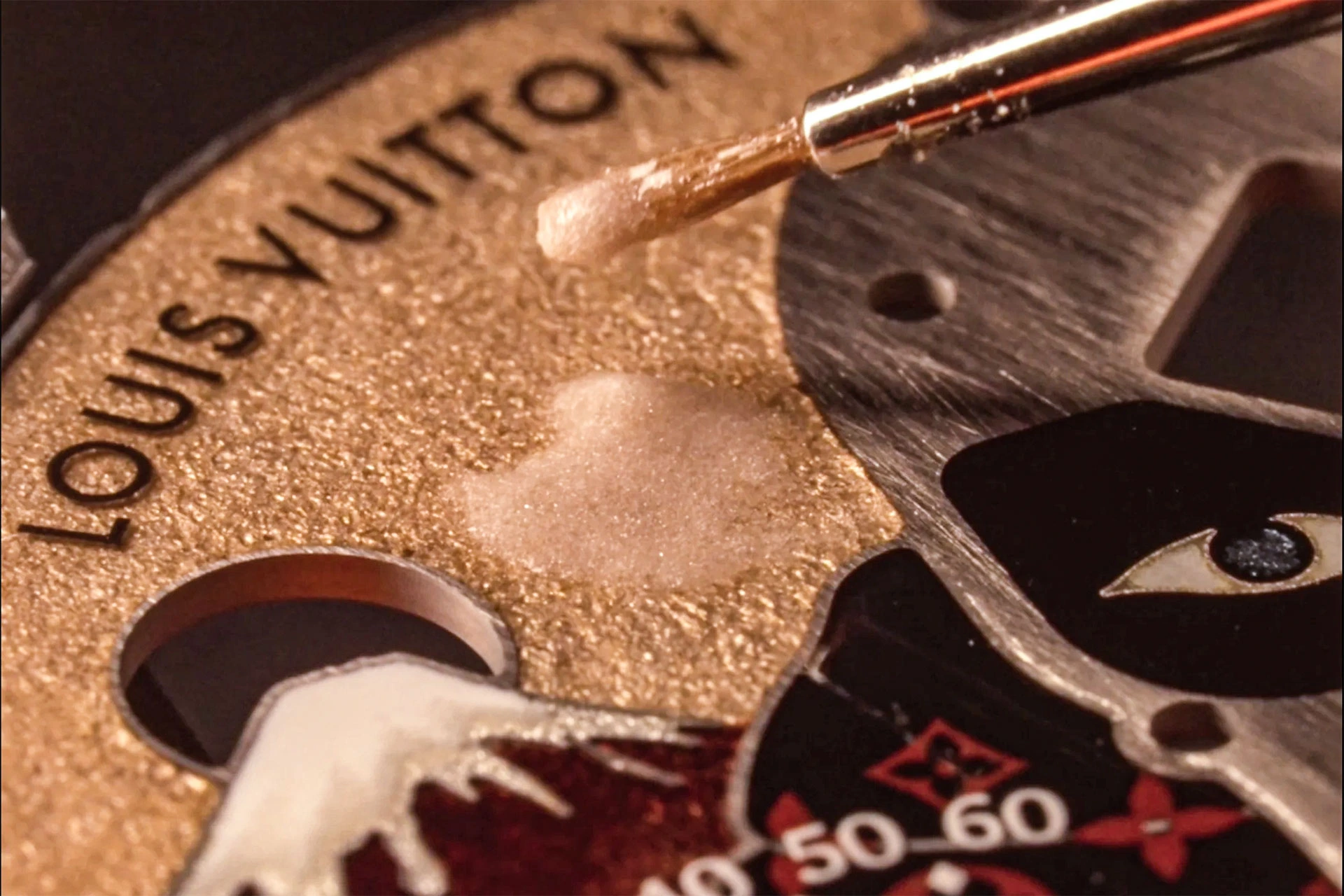
The Mechanism of the Tambour Bushido Automata
Activating the pusher on the side of the case sets in motion a mechanical sequence that unfolds over 16 seconds, comprising five distinct animations on the dial. At the heart of the display is a Yōkai figure – a mythical spirit – with ruby-set eyes, perched on the Samurai’s forehead. It shifts aside to reveal the jumping hour aperture beneath. As the animation continues, the Samurai’s expression begins to change: the right eye transforms from a rounded LV Monogram flower to a sharper-edged motif, while the jaw gradually opens to display the Japanese kanji for “Bushidō” – rendered in bold red against a black background – before the pearlescent teeth close once more.
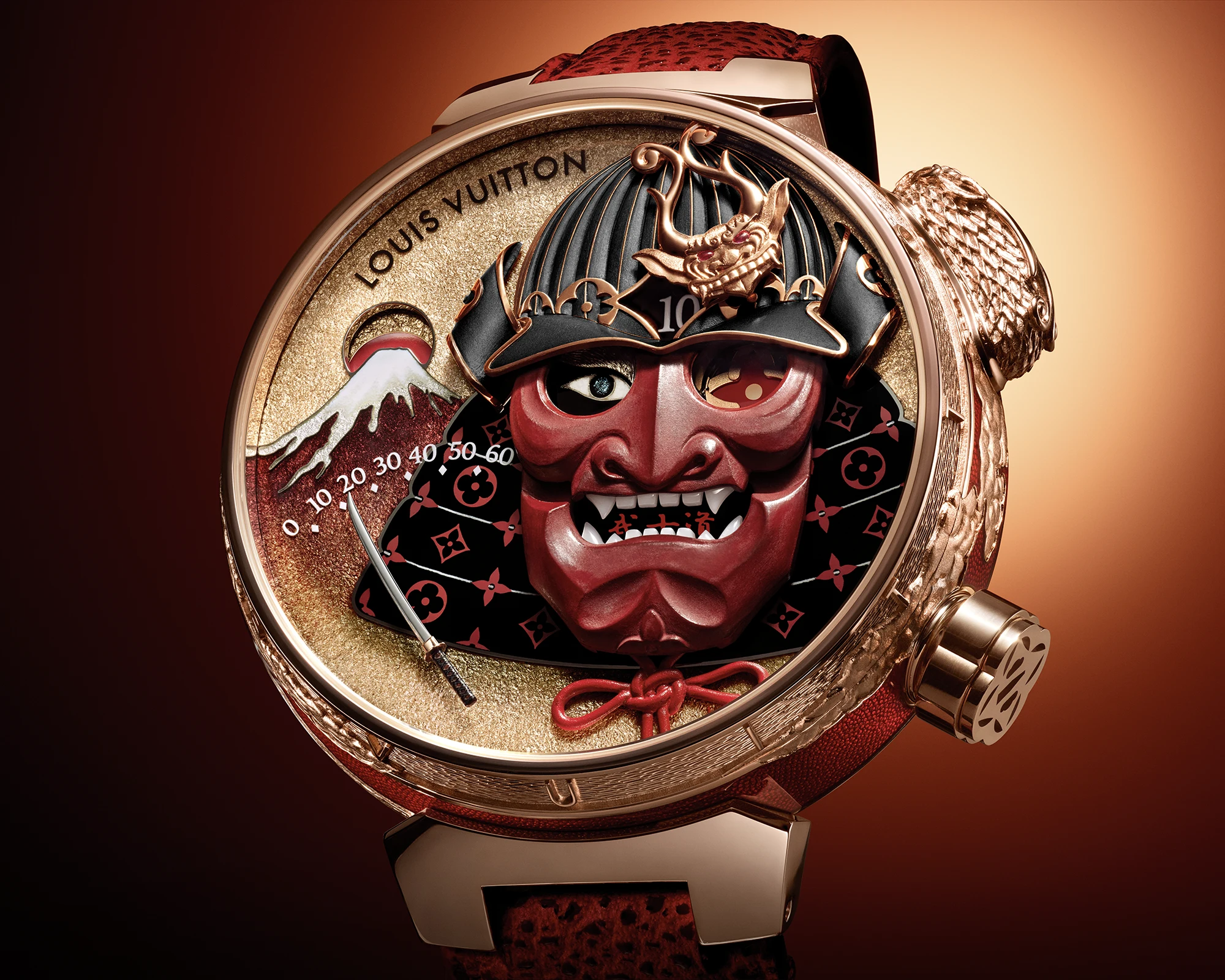
The Movement
Powering this spectacle is the manual-winding calibre LV 525, developed and crafted entirely in-house by La Fabrique du Temps. The movement is based on the calibre first introduced in the 2021 Tambour Carpe Diem. A look through the caseback reveals yet another hidden detail: amid traditional finishes such as perlage and Geneva stripes, a red Yōkai spirit is integrated into the decoration of the movement.
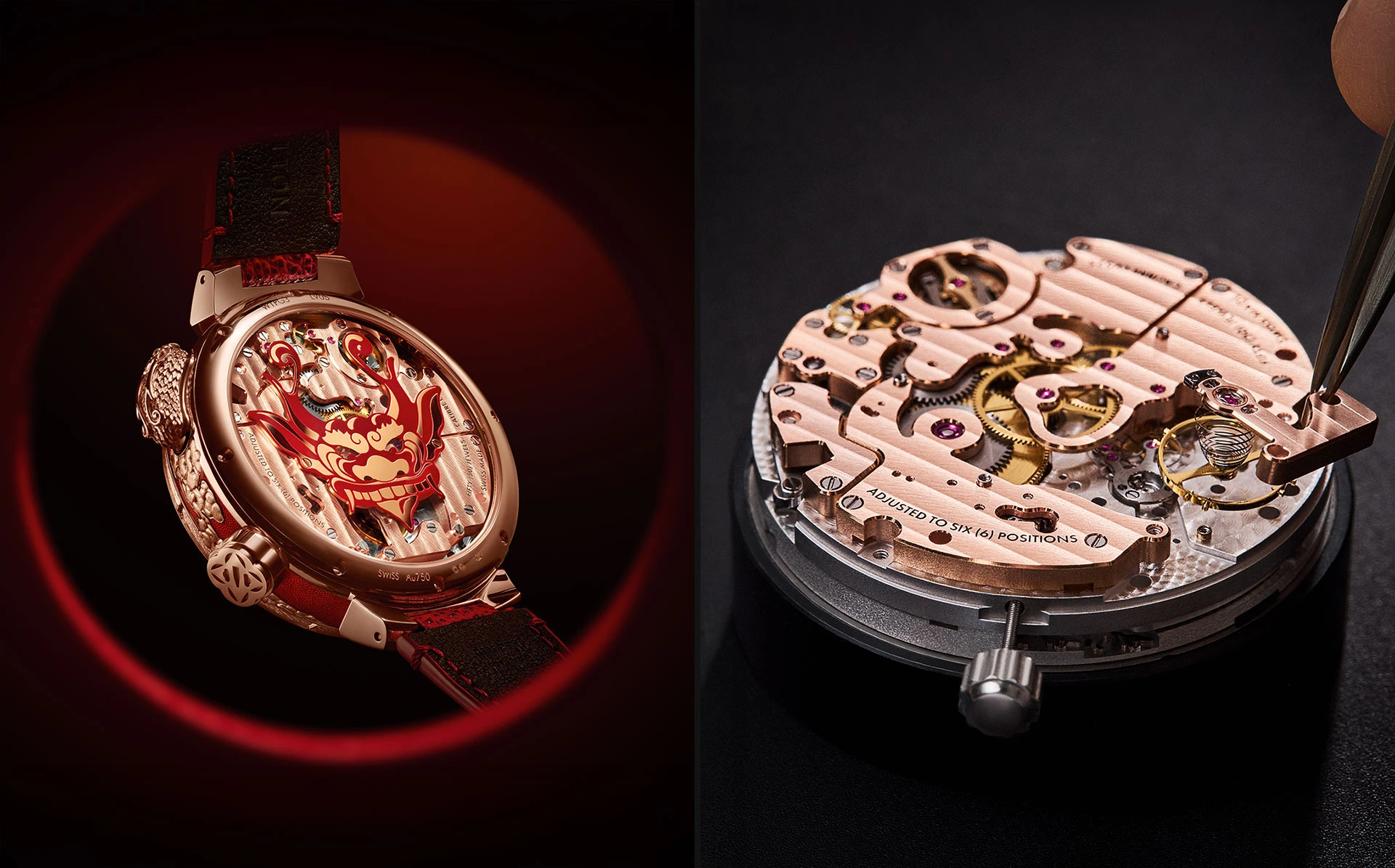
The Case
The case of the Tambour Bushido Automata marks a first for the collection: it is entirely engraved and enamelled, from bezel to caseback. The technique employed is known as Champlevé enamelling – one of the oldest enamel methods. It begins with the hollowing of the metal surface through hundreds of tiny hammer strikes. The resulting cavities are then filled by hand with red enamel, which fuses with the recesses when fired.
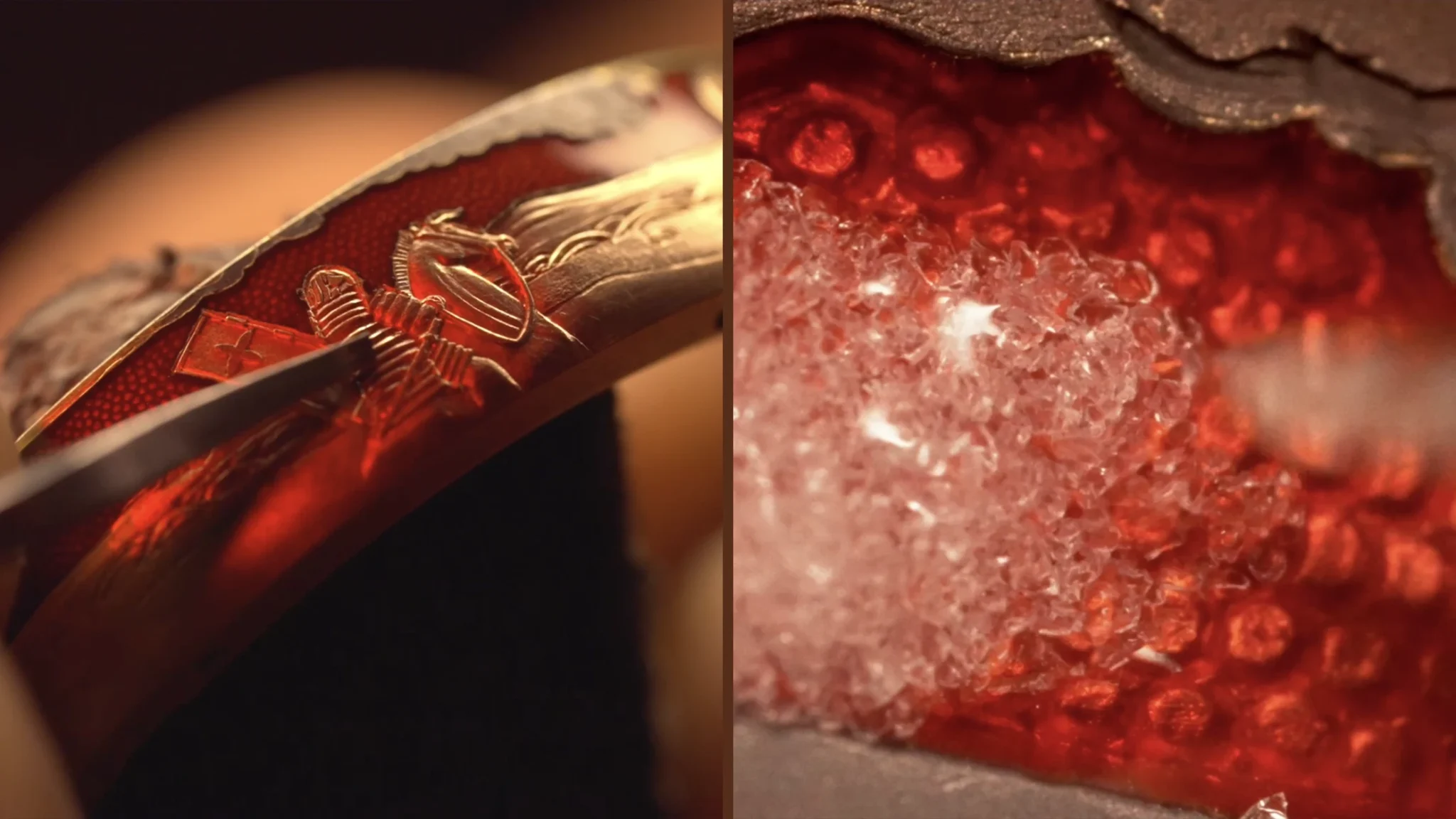
The fully engraved case, adorned with translucent red enamel, required approximately 200 hours to complete. According to Louis Vuitton, a further 140 hours were dedicated to engraving the dial, pushers, and crown. All work was carried out by the same artisans, following a consistent and unified design language.
The one-of-a-kind Escale en Amazonie
This unique creation is the most complex timepiece ever produced by Louis Vuitton, drawing inspiration from the biodiversity, dense foliage, and waterfalls of the Amazon rainforest. The Escale en Amazonie unites a minute repeater and a tourbillon with an Louis Vuitton automaton mechanism that brings the dial to life. The pocket watch features two distinct faces – an animated dial and an decorated movement on the reverse – each showcasing a different facet of artisanal mastery.
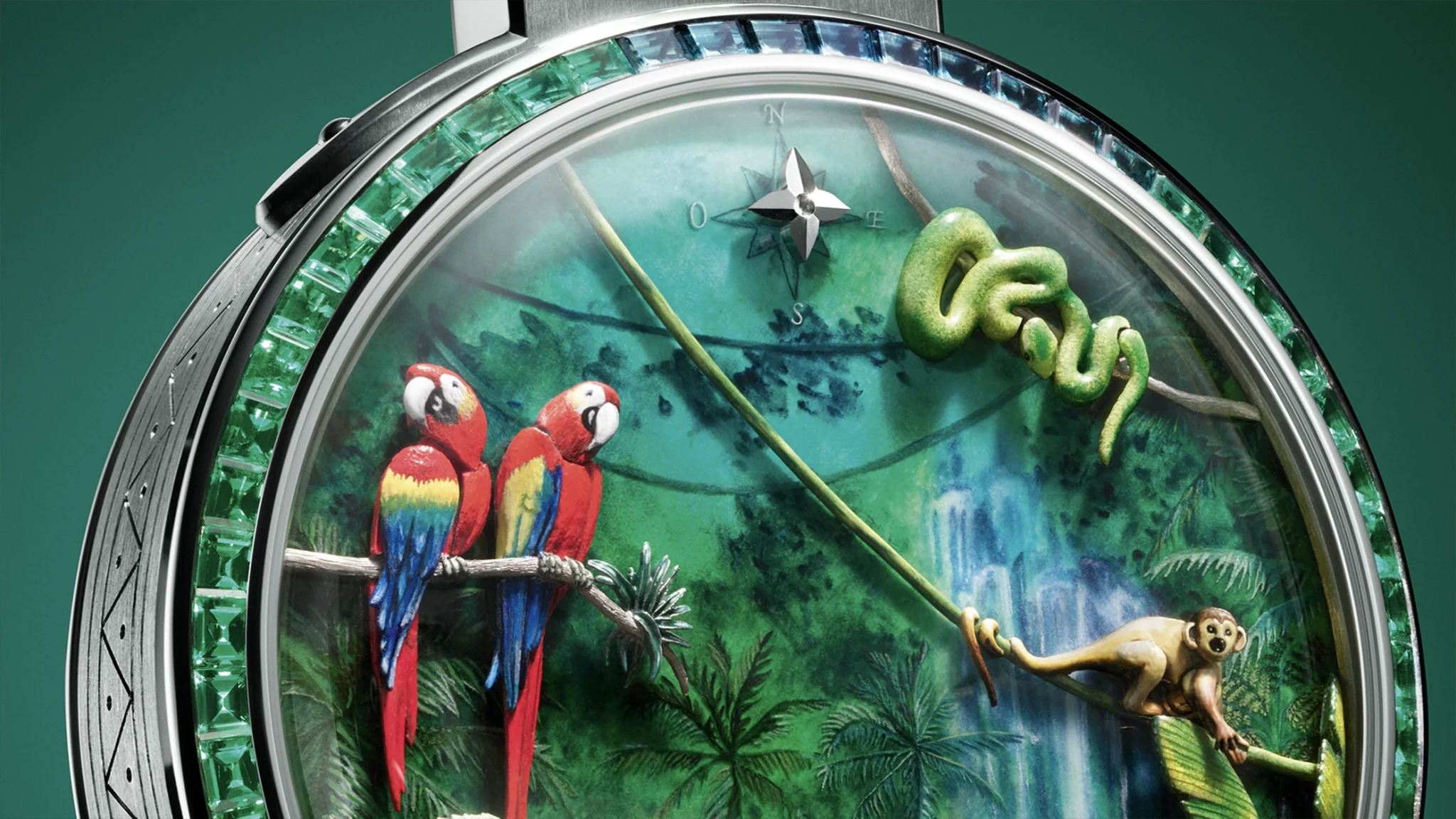
The Dial
The full enchantment of the Escale en Amazonie reveals itself when the slide at six o’clock is activated. A total of seven animations involving fifteen moving components transform the static dial into a vivid jungle scene: parrots begin to sway their heads and feathers, a snake undulates its tail and head, and a monkey animates a leaf at five o’clock with its flexible arm. The scene culminates in a miniature boat – laden with Louis Vuitton trunks – gliding from the foliage across the dial along the river. As the boat advances, the trunks slowly open to reveal golden Monogram flowers. Crowning the composition at twelve o’clock is a rotating compass rose, crafted from gold.
To depict the Amazon’s riot of colour and movement, two primary enamelling techniques were employed across the dial components: miniature enamel and paillonné enamel. Miniature enamel was used to create the layered background – a cascading waterfall and abundant vegetation – lending both spatial depth and narrative context to the animated figures. The waterfall is rendered in fluid gradients to evoke motion, while the palm trees are painted layer by layer to add dimensional perspective.

Each animal, from the snake to the monkey, as well as every leaf, is also hand-painted in miniature enamel using five transparent layers. Because the animals and foliage rise above the dial’s surface, an added illusion of depth is achieved. For the first time in a Louis Vuitton watch, a enamelled leaf has also been applied directly to the sapphire crystal between four and five o’clock.
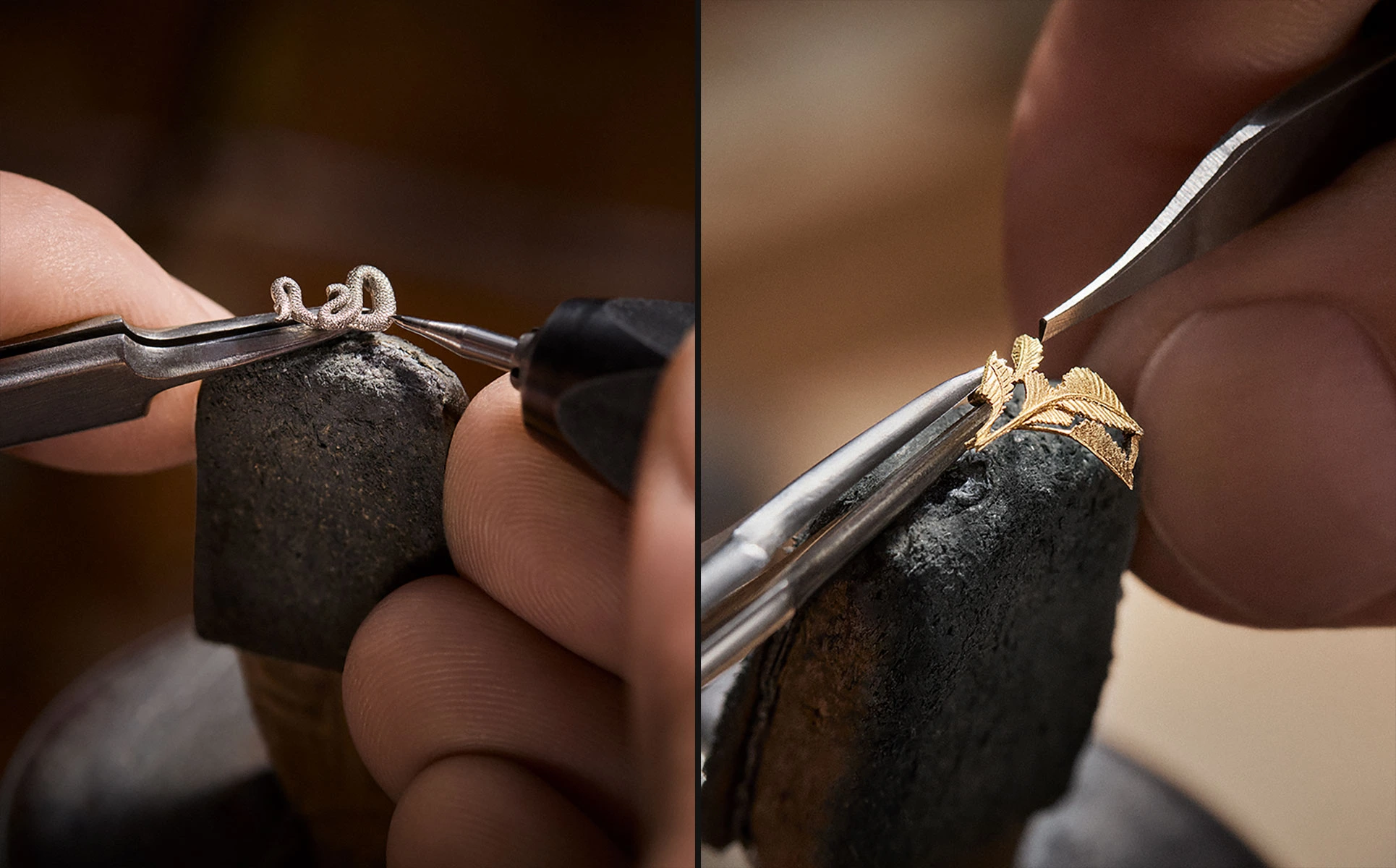
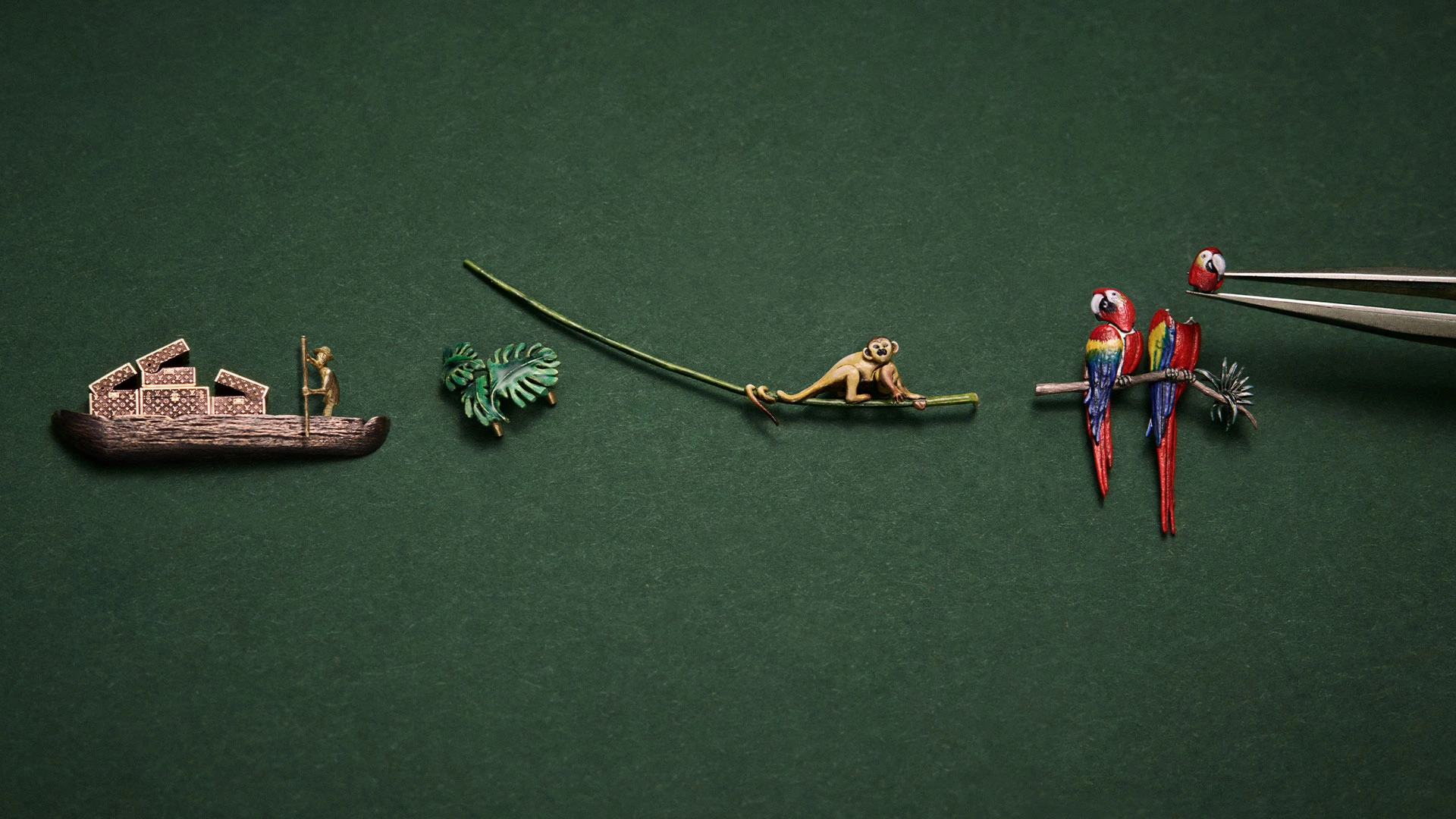
The second technique, paillonné enamel – which involves inlaying fine gold foil and layering it with translucent enamel – was used for the Monogram flowers that float on the river at six o’clock, lending the composition a subtle golden flourish. In total, 31 shades of green, blue, brown, and white were used to capture the Amazonian landscape and enhance the play of light and shadow. To achieve the desired intensity across the transparent, opaque, and opalescent layers, the enamelling required 30 separate firings in the kiln.
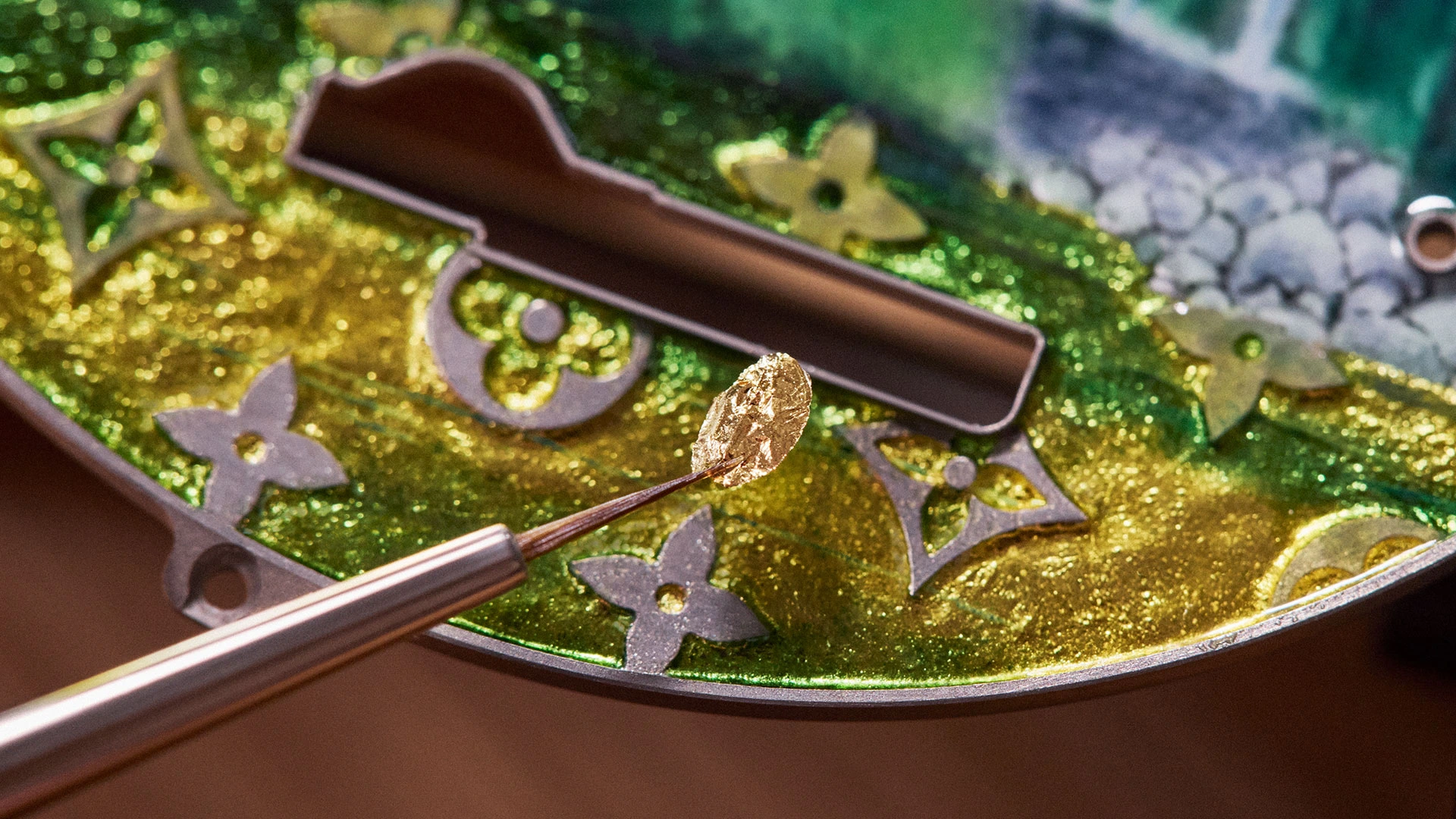
The Most Complex Louis Vuitton Movement to Date
Beyond its core automaton function – animating the Amazonian landscape with moving figures – the Escale en Amazonie reveals, on its reverse side, the most complex movement Louis Vuitton has ever created. The calibre, named LFT AU14.03, combines a minute repeater for hours, quarter-hours, and minutes with a tourbillon, while also displaying the time via blued hands. This dual-sided composition is where the true brilliance of the Escale en Amazonie comes into focus: each face presents its own world, offering a completely distinct impression.
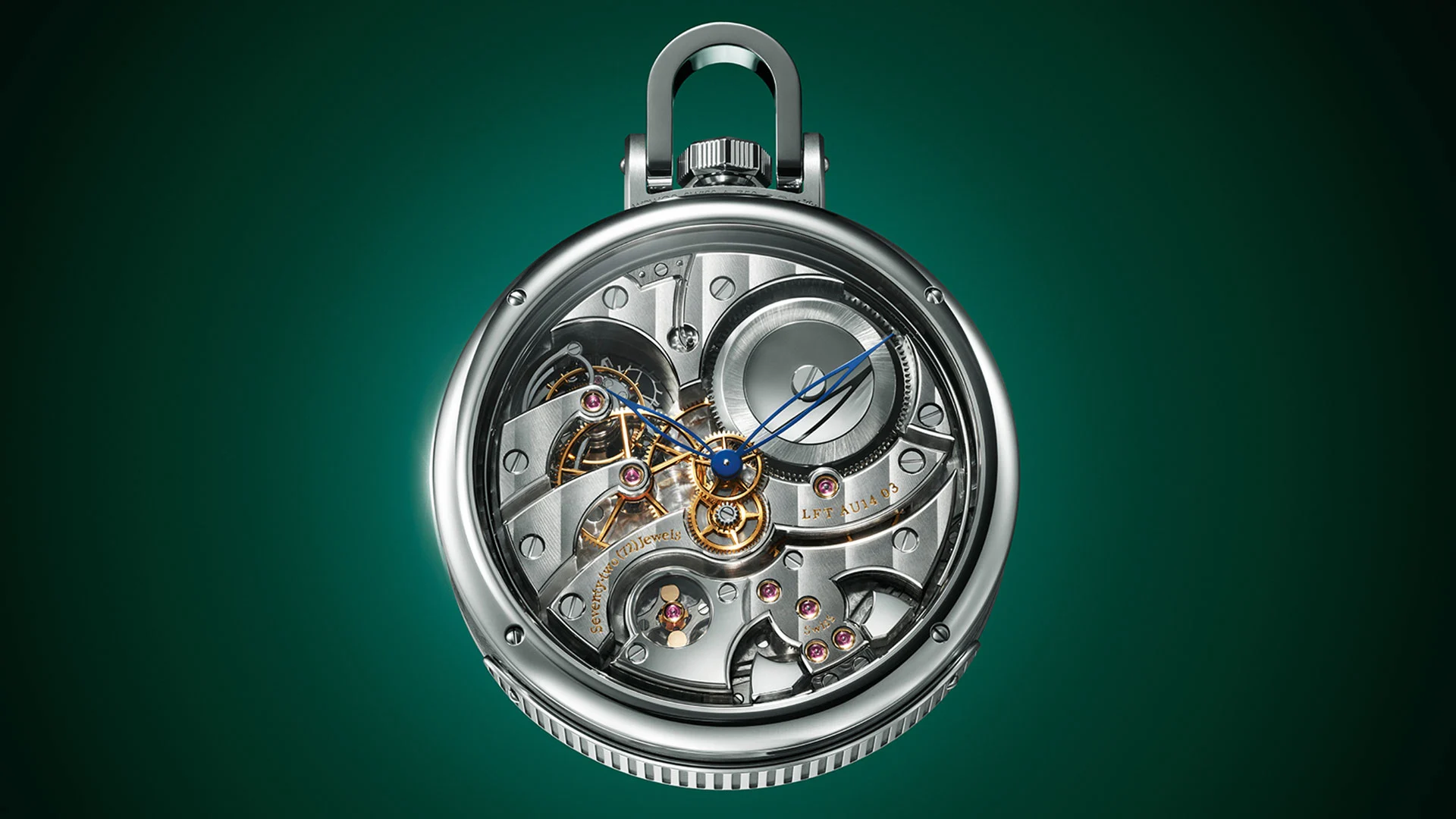
The movement was conceived, assembled, and hand-finished from start to finish by a single watchmaker. In total, the calibre consists of 555 components and features 646 internal angles. To grasp the extraordinary level of skill and patience required for such a mechanism: even the teeth of the gear wheels are mirror-polished. Completing the visual splendour is the Geneva-striped decoration (Côtes de Genève) adorning the bridges of the movement, which delivers a power reserve of approximately eight days. In total, the Escale en Amazonie is the result of around 1,000 hours of artisanal labour, spread across two and a half years.
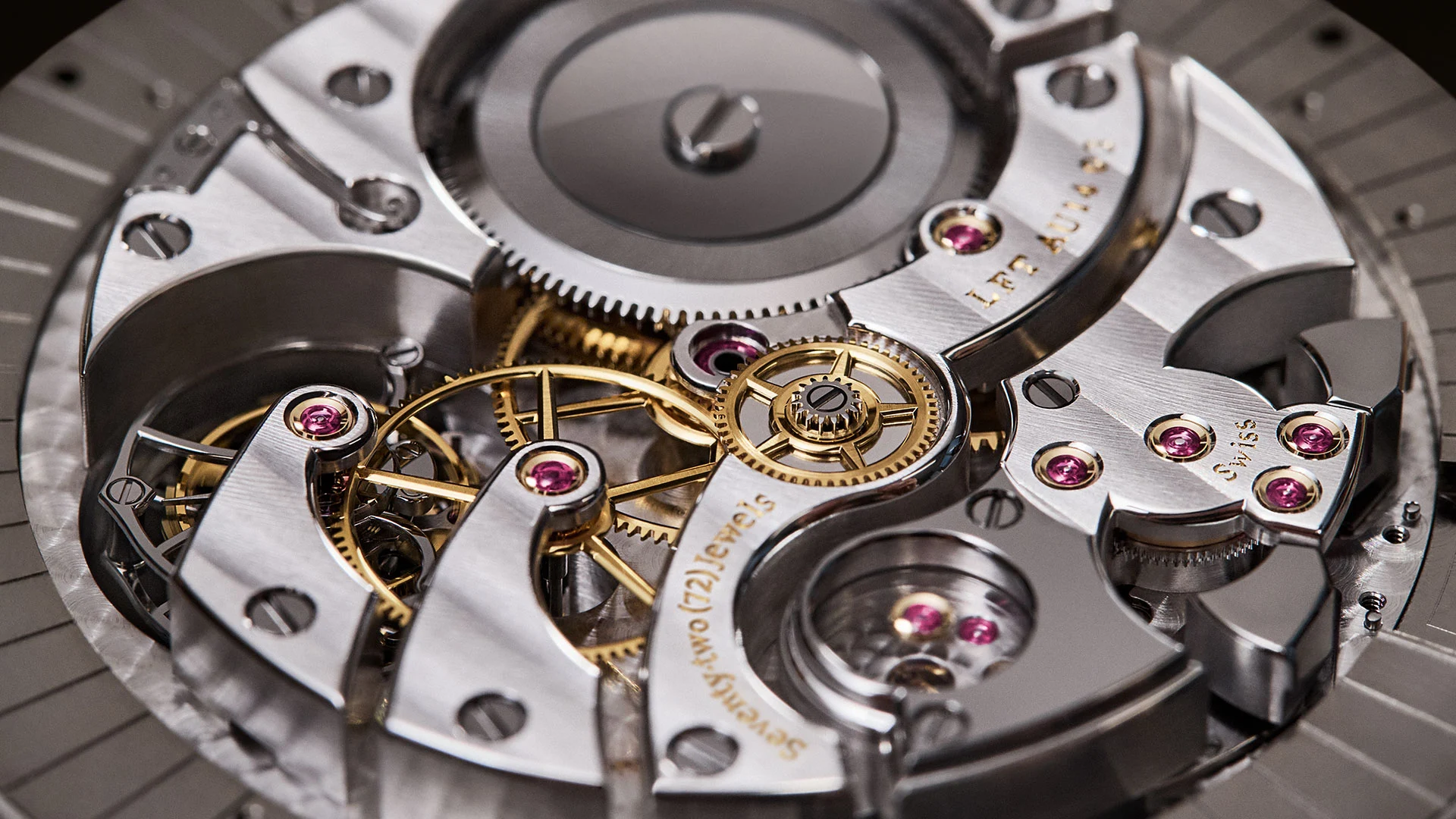
Tambour Taiko Galactique
In 2023, Louis Vuitton unveiled the Tambour Jacquemart Minute Repeater – a timepiece whose dial was dedicated to space exploration, featuring both a minute repeater with cathedral gongs and an automaton function. The third creation among the brand’s latest releases, the Tambour Taiko Galactique, can be seen as a continuation of this concept. It too offers a minute repeater with cathedral gongs that chimes the hours, quarter-hours, and minutes on demand, alongside an automaton mechanism – yet it enriches the cosmic narrative with a more elaborate scene: an astronaut planting a flag on the Moon, set against the rising image of the Earth in the background.
The Louis Vuitton Automaton Mechanism
When the slide on the case flank is activated, seven dial animations begin to move in harmony with the chimes of the minute repeater. The astronaut swings his articulated arms in an alternating rhythm, as if ready to plant the flag on the Moon – suggesting a graceful floating motion. To the right, the satellite’s antenna, solar panels, and thruster come to life, while a shooting star and the sun at 12 o’clock begin to spin, completing this orbital choreography.
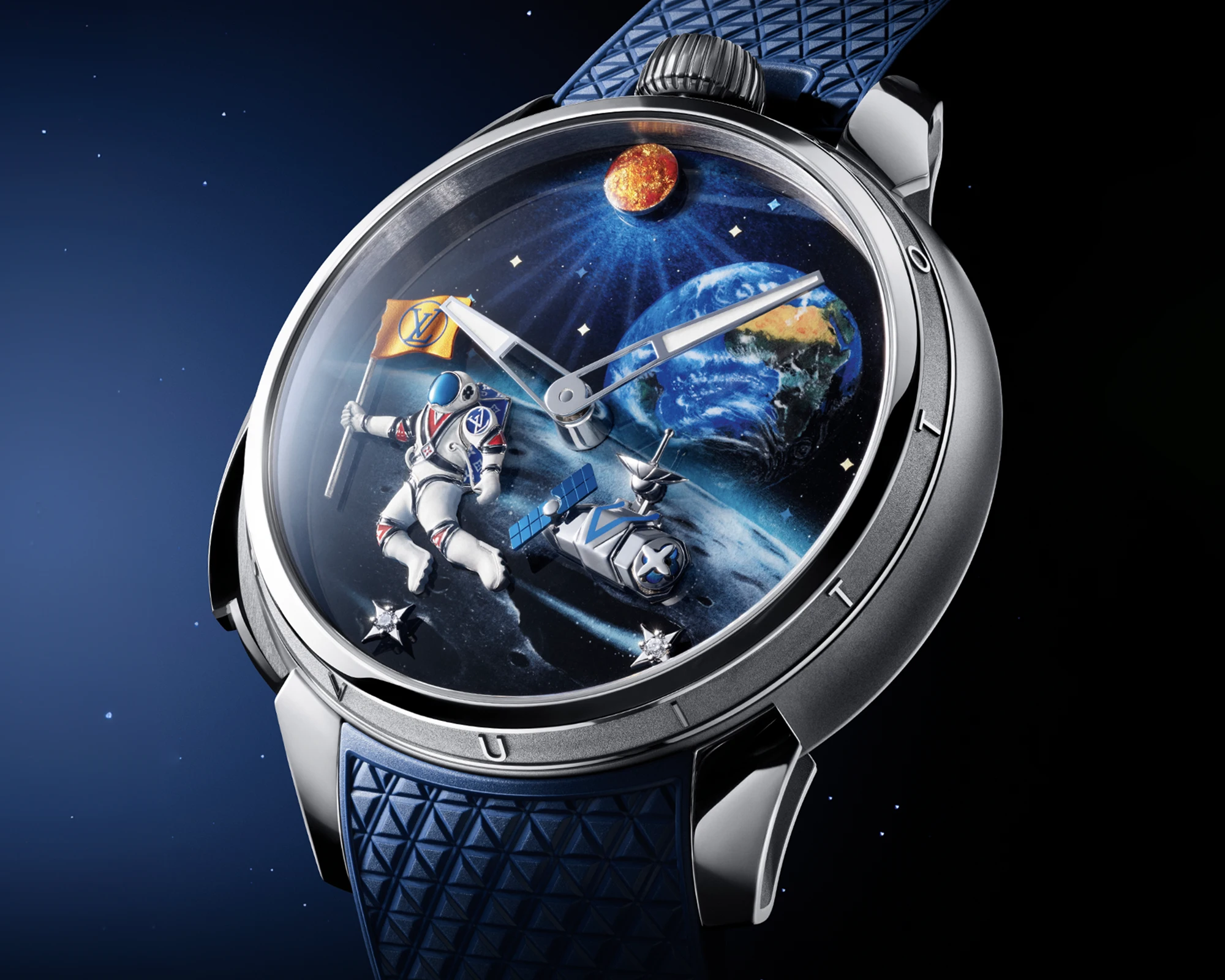
The Dial
To achieve this richly detailed dial – a view of Earth from the lunar surface – an array of artistic techniques was employed. The foreground features the Moon, rendered using the grisaille enamel method. This involves layering white enamel on a black enamel base to achieve subtle gradations of grey – a process requiring immense precision, as each layer must be fired individually.
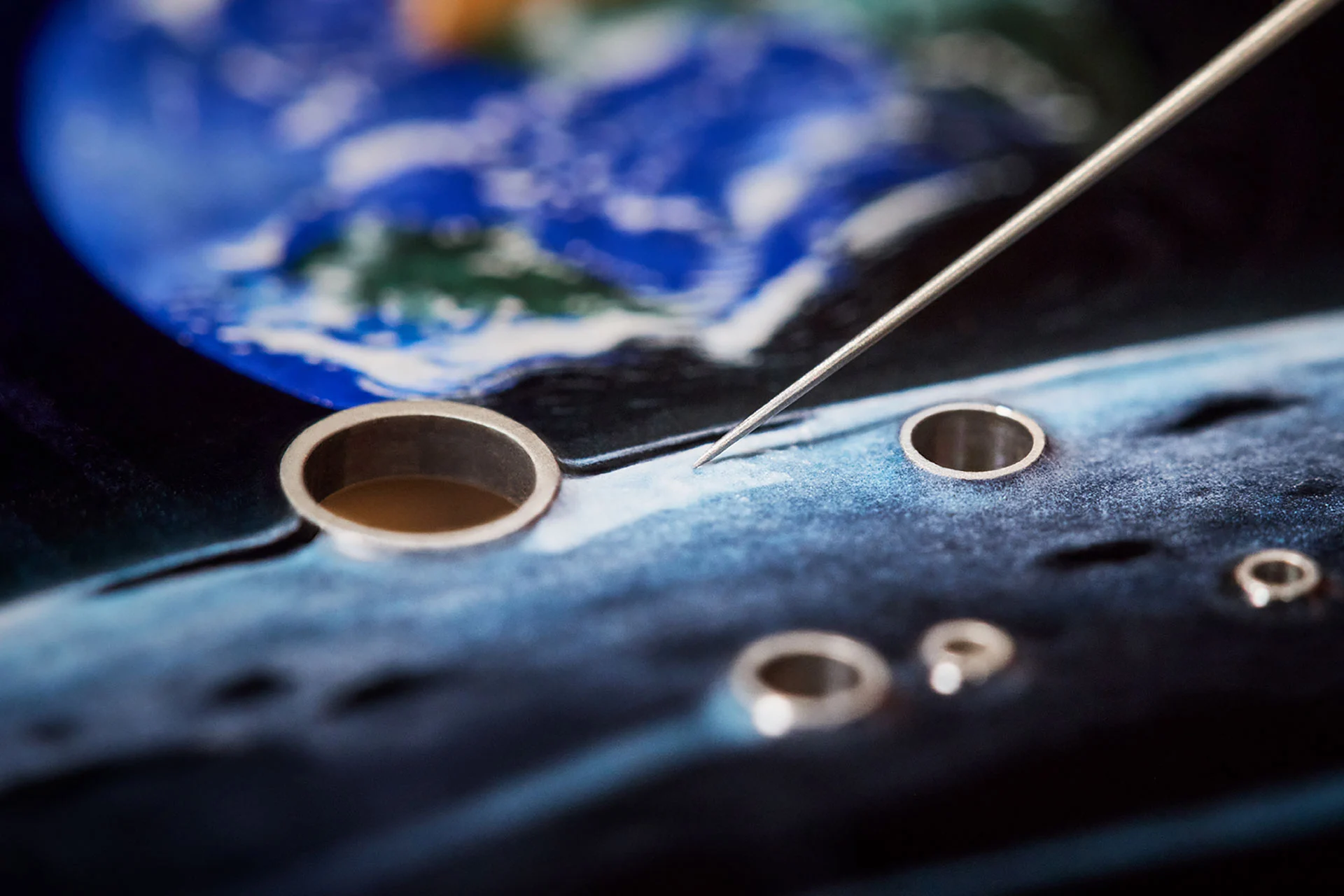
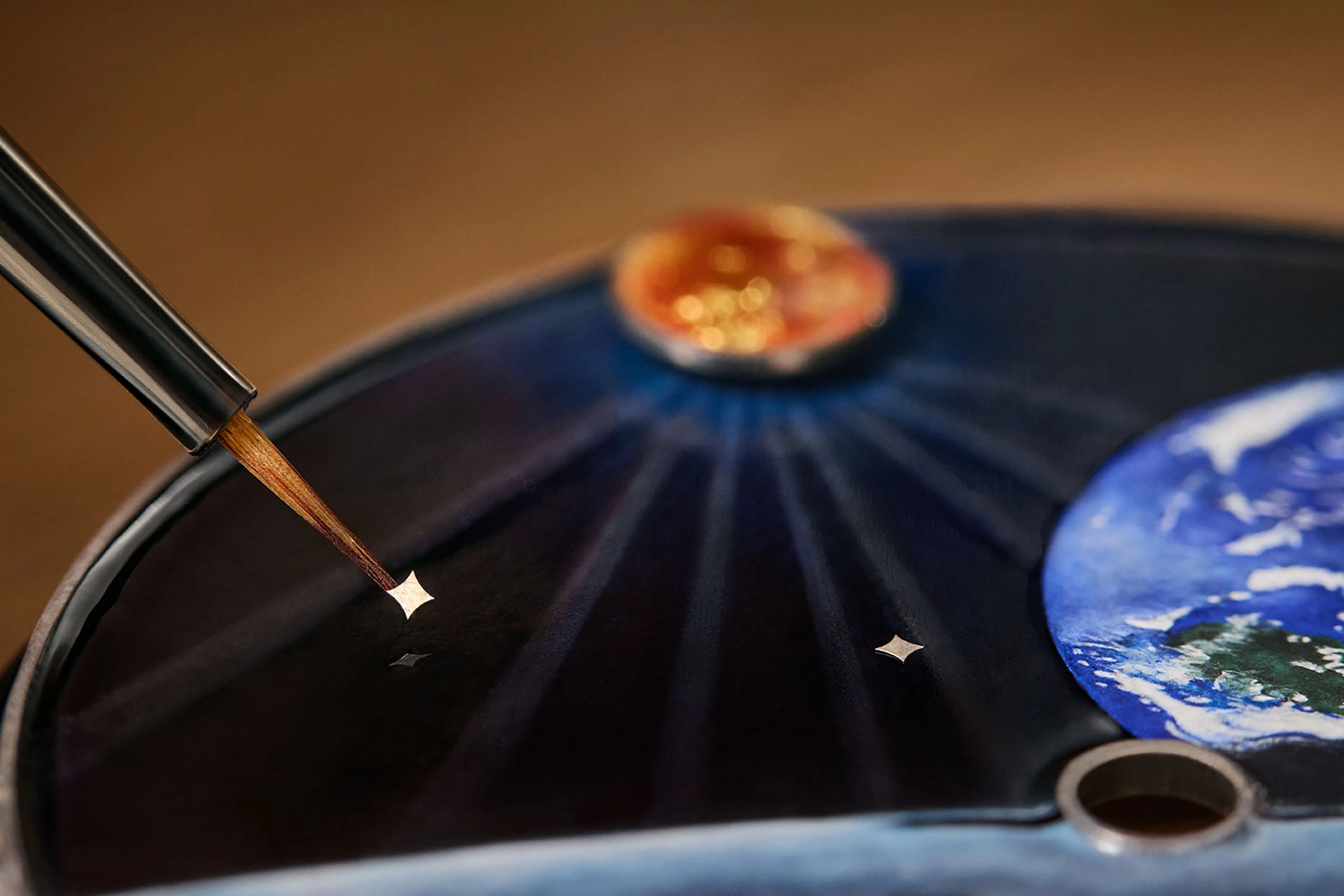

The astronaut figure was hand-sculpted by Louis Vuitton’s master engraver, with its cavities later filled using the Champlevé technique. Delicate details such as the red Monogram flowers were painted in miniature, each requiring three layers of enamel. Miniature enamel was also used to depict the Earth, applied in layered tones of orange, green, white, and blue. Of note is the use of Grand Feu enamel – a term reserved for enamelling fired at exceptionally high temperatures between 820°C and 850°C.

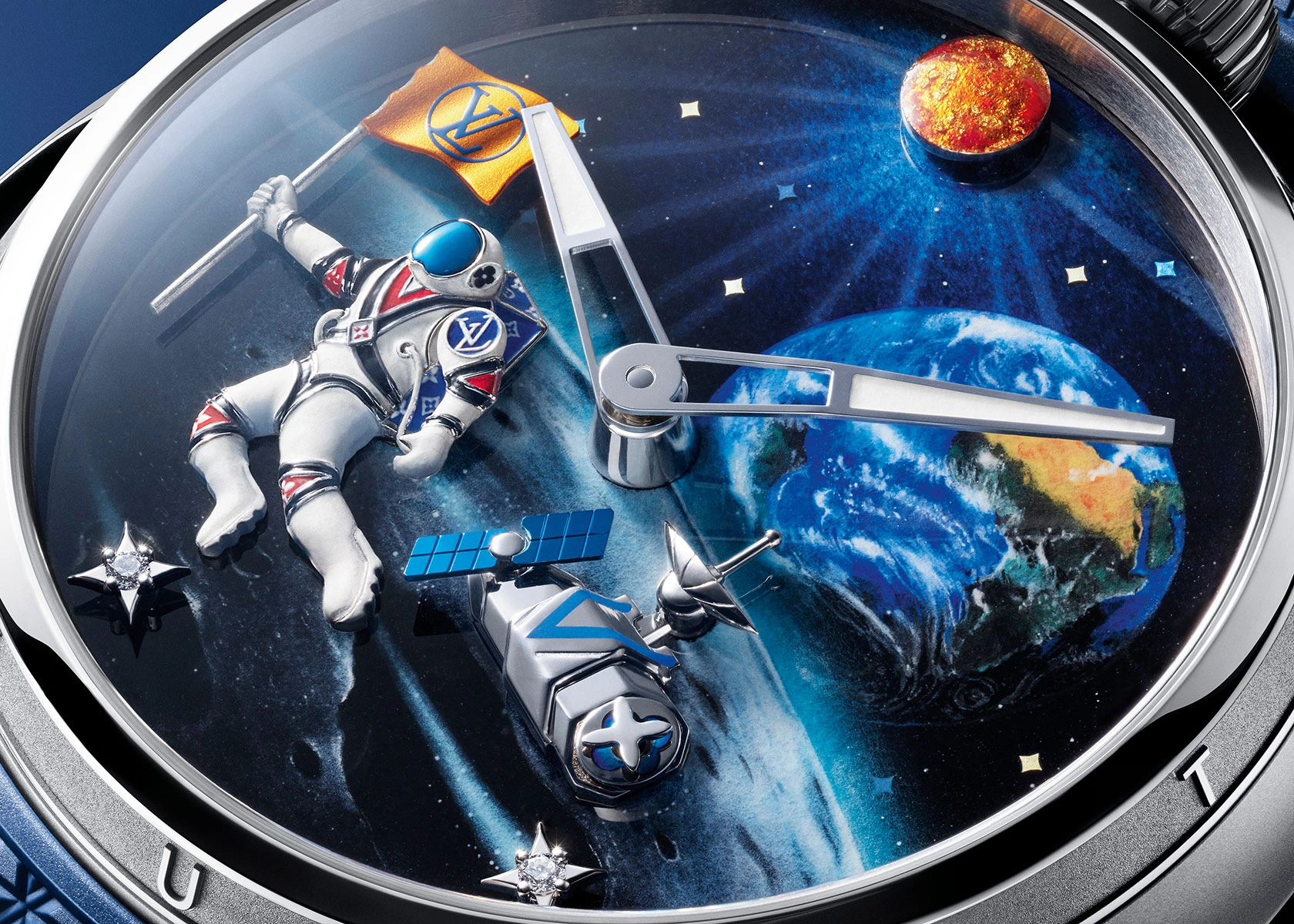
To represent the sun at 12 o’clock, the Paillonné technique was used, where yellow gold foil (paillons) is embedded between translucent enamel layers, producing a glowing effect.
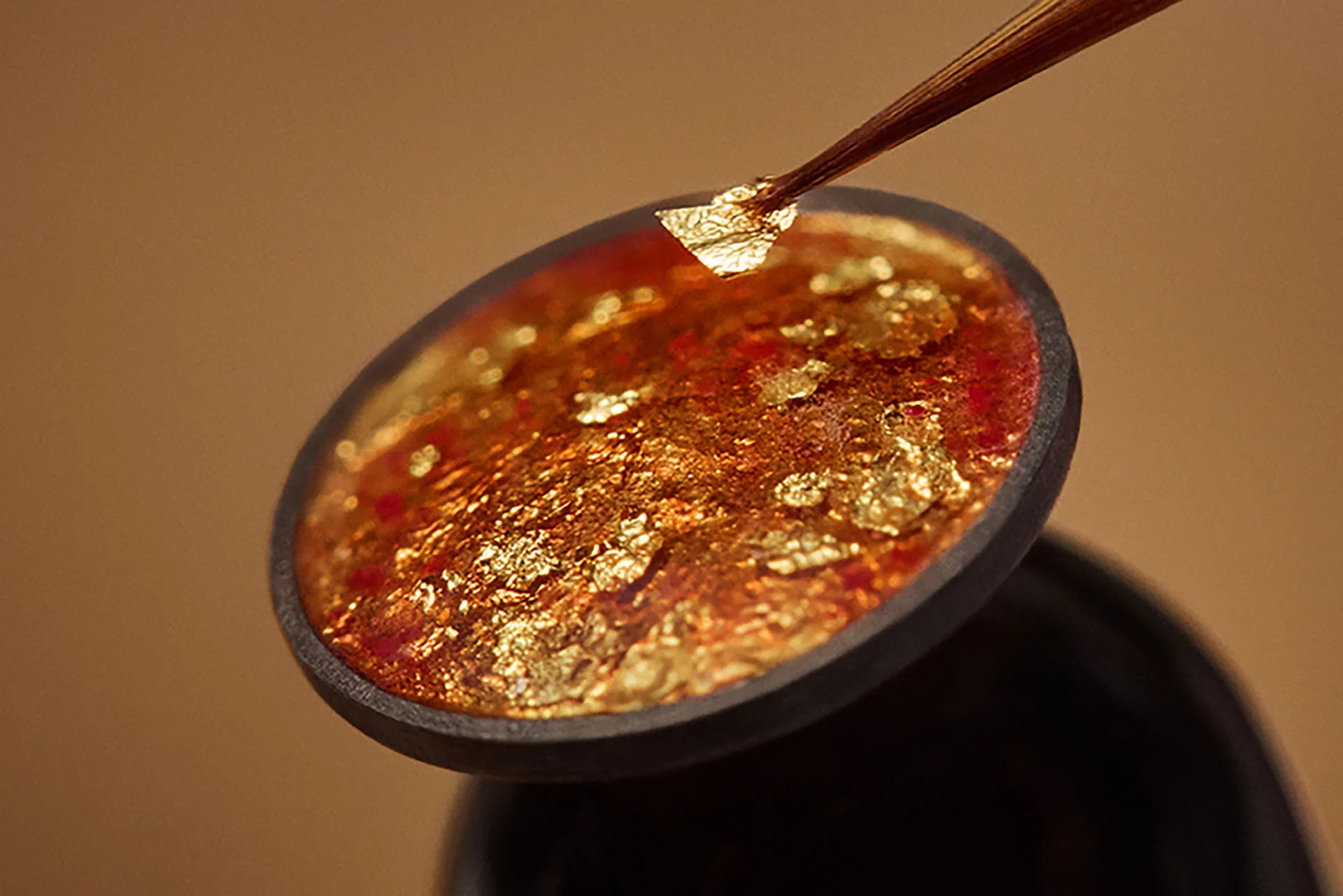
Movement and Case
Inside the watch beats the manual-winding calibre LFT AU14.02 – developed entirely by La Fabrique du Temps Louis Vuitton and specially conceived for the Tambour Taiko Galactique. It delivers a 100-hour power reserve and is housed in a case produced by Louis Vuitton’s own Fabrique des Boîtiers. The lugs feature hollowed architecture with contrasting finishes: mirror-polished on the exterior and sandblasted on the interior. A final signature element is the white gold crown, positioned at 12 o’clock – a distinguishing trait of this interstellar timepiece.
